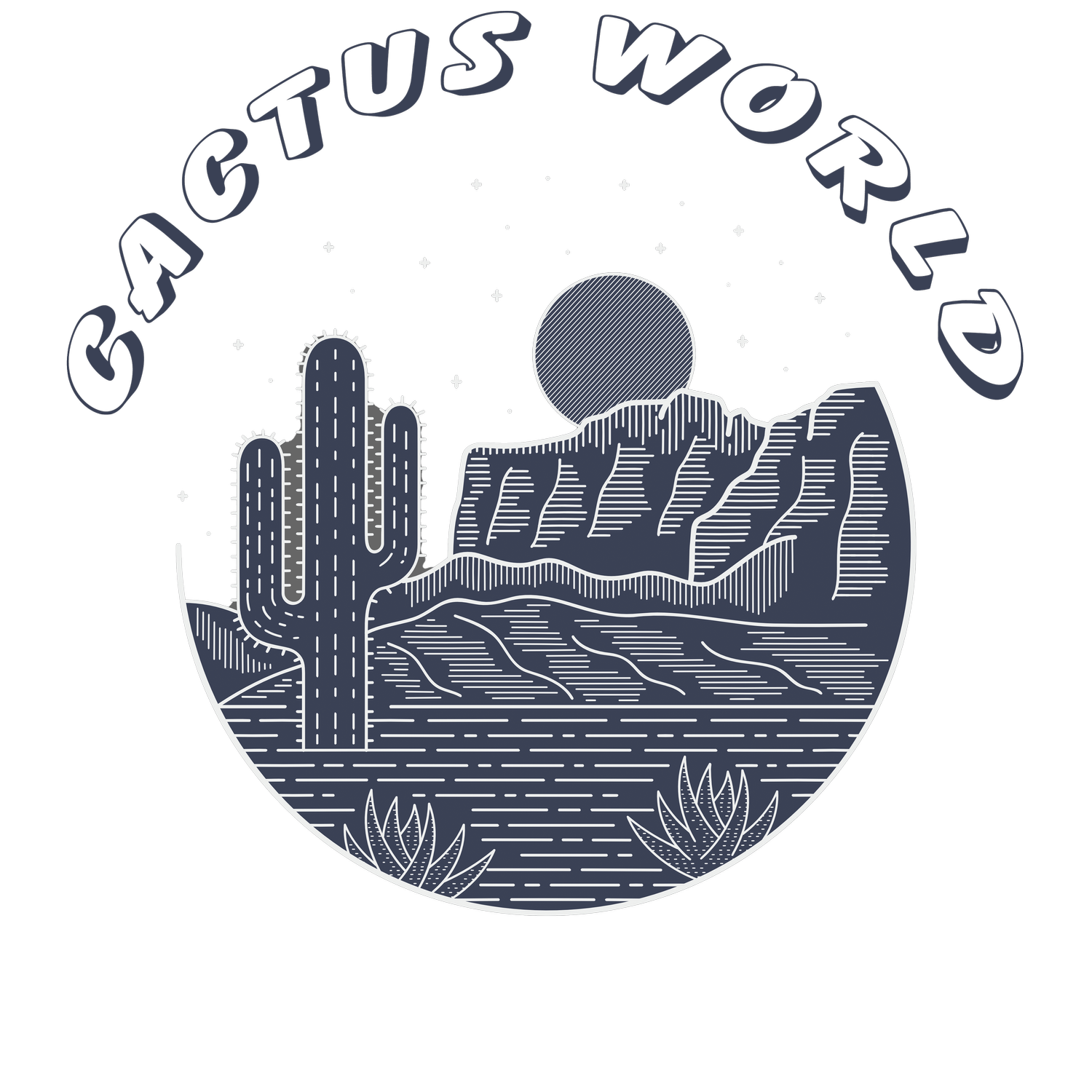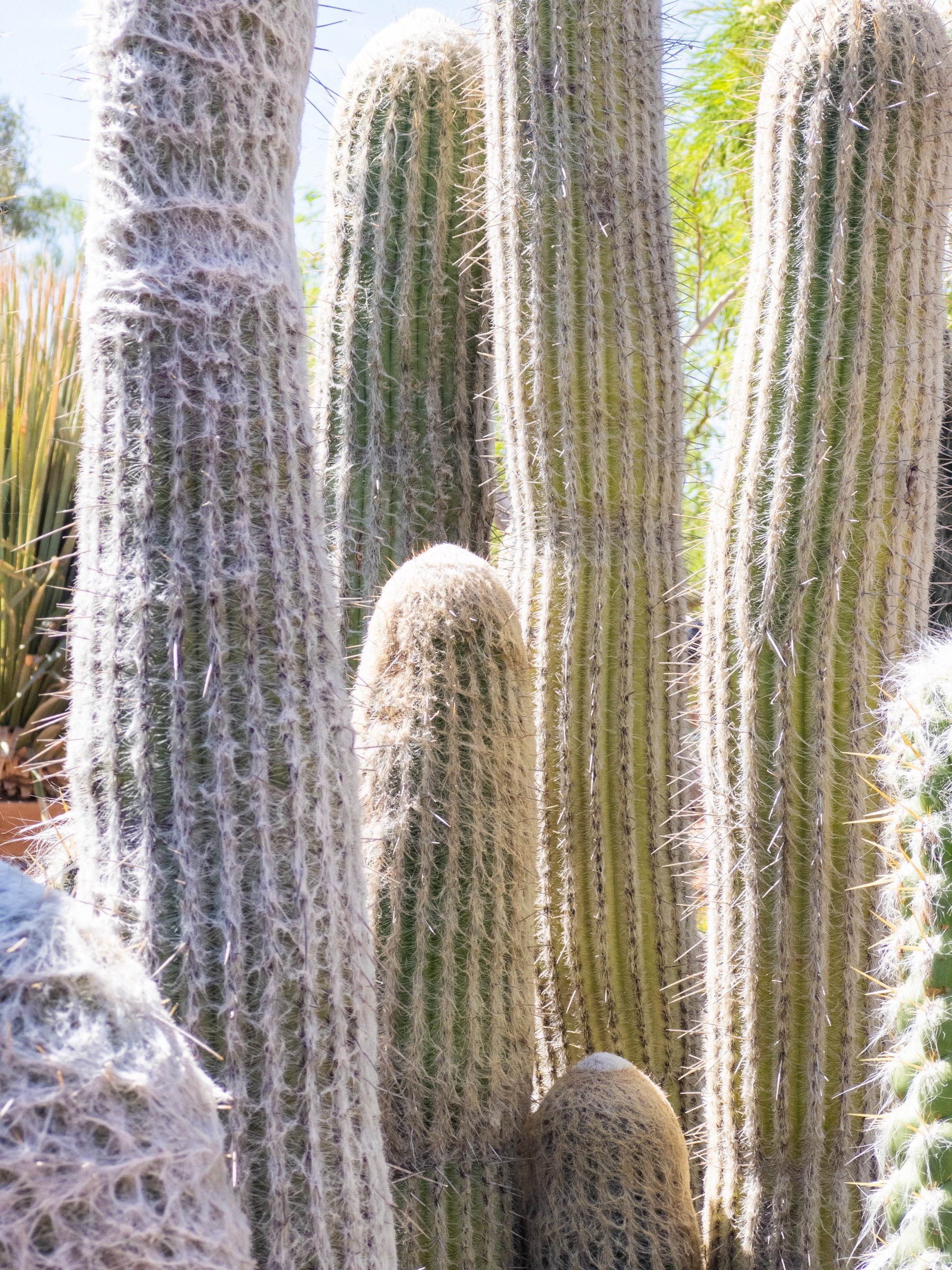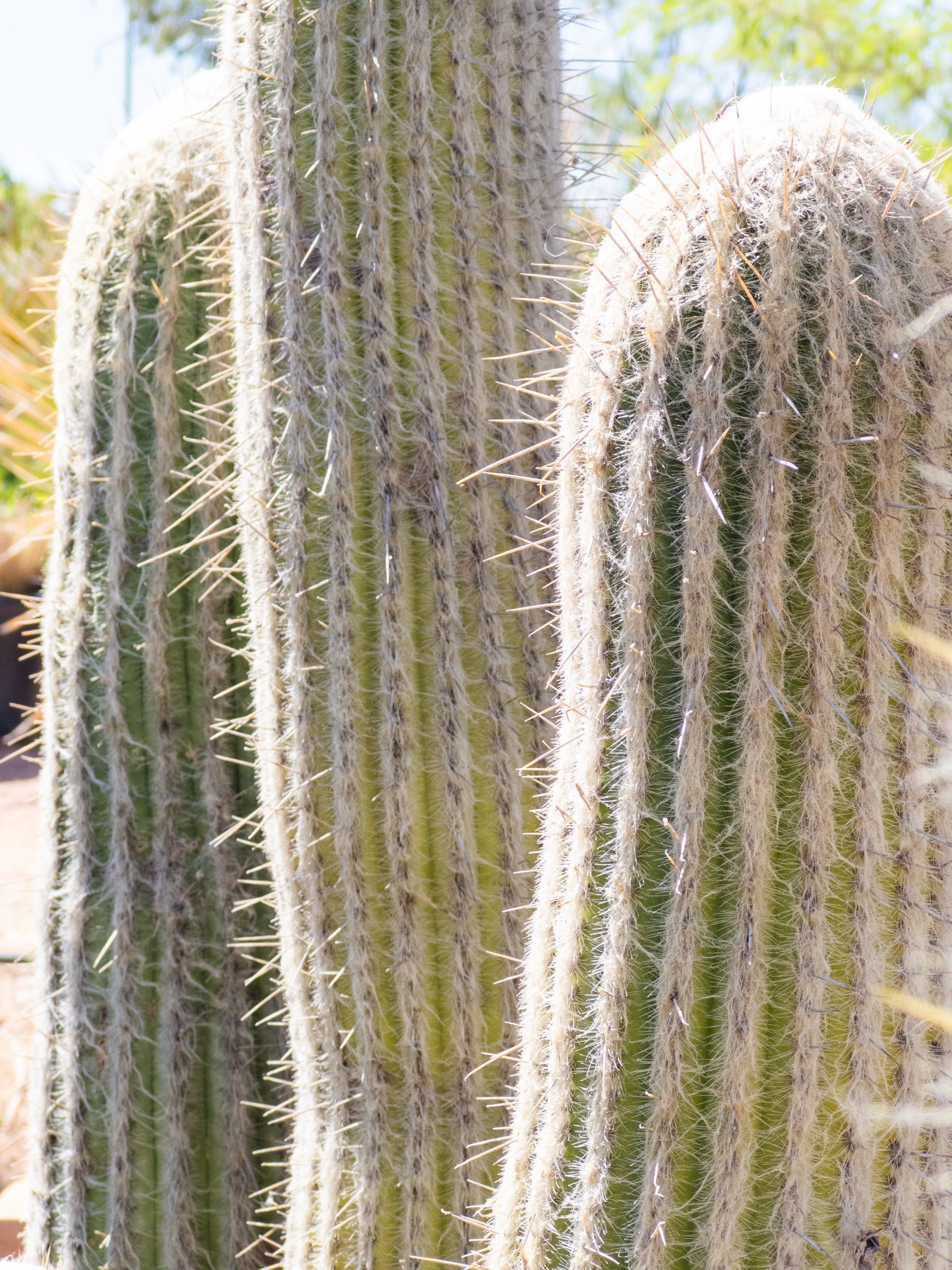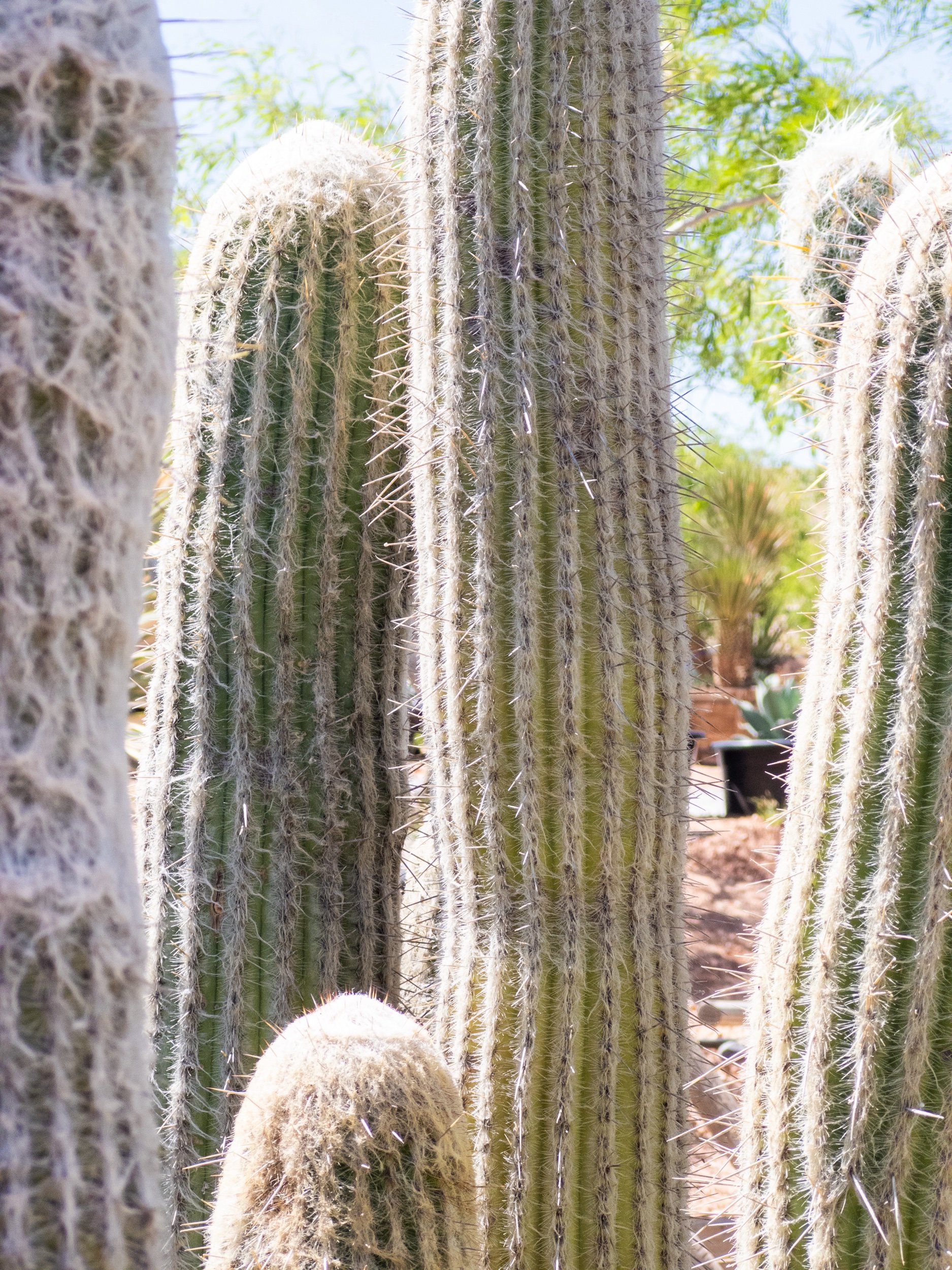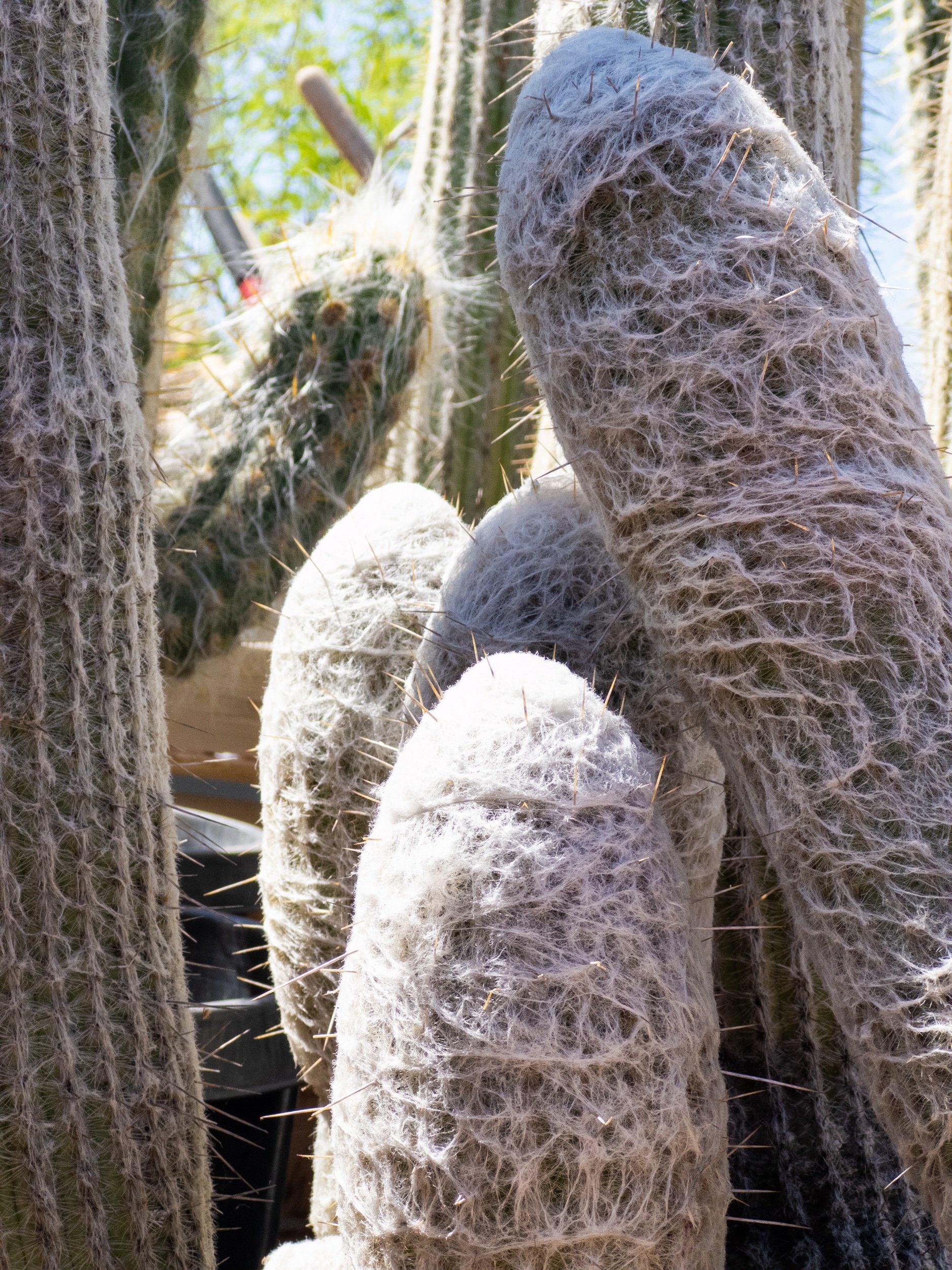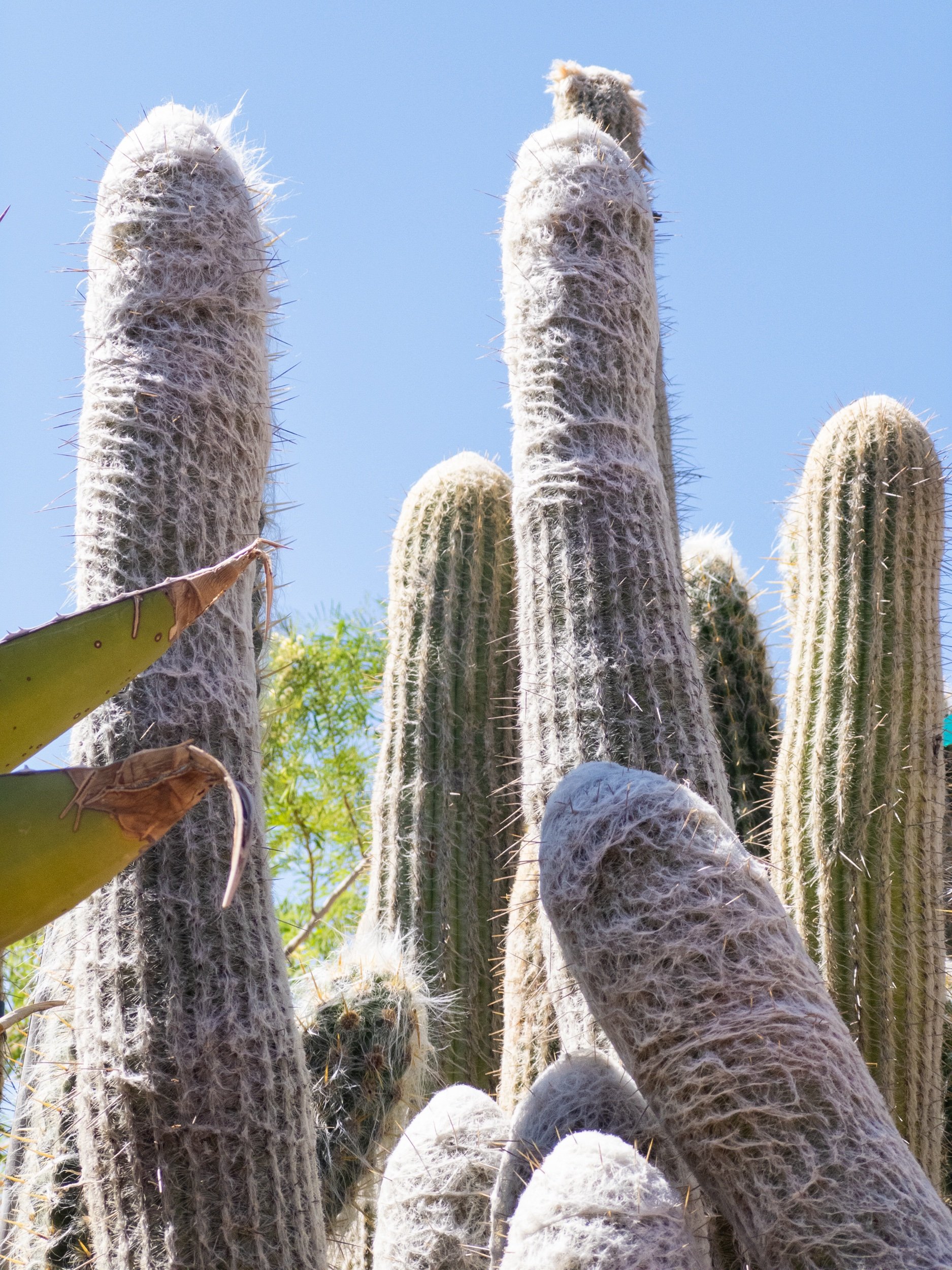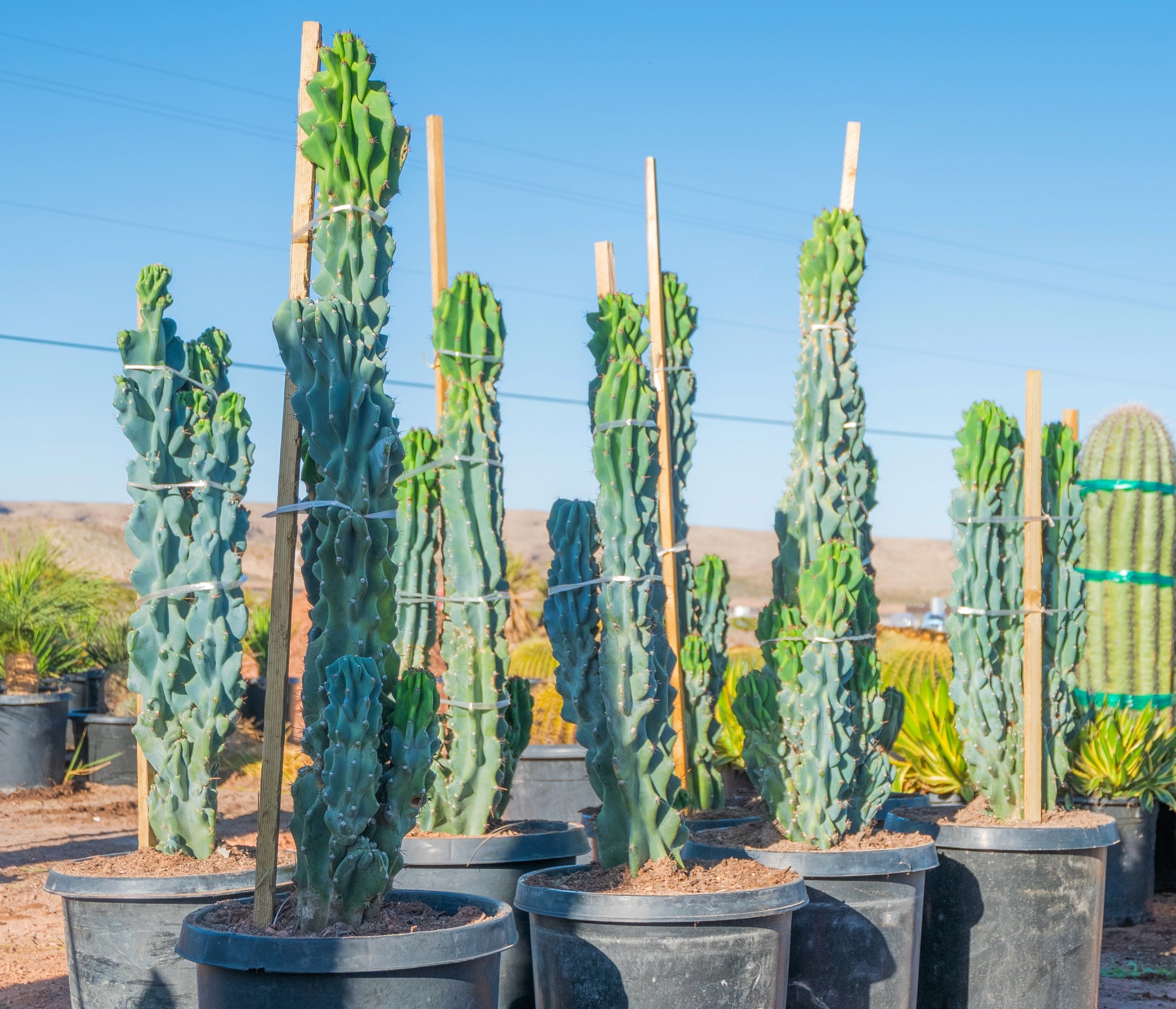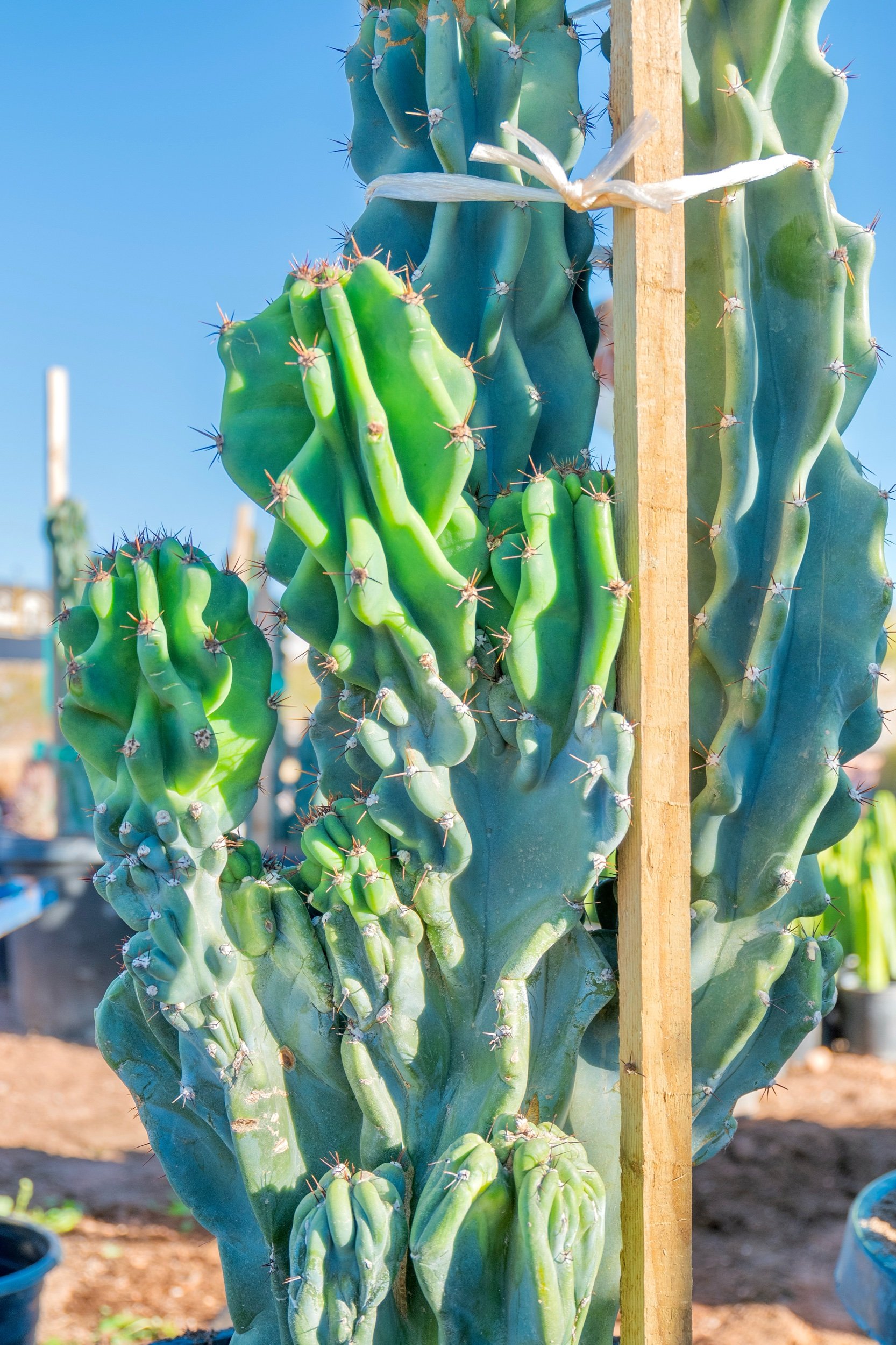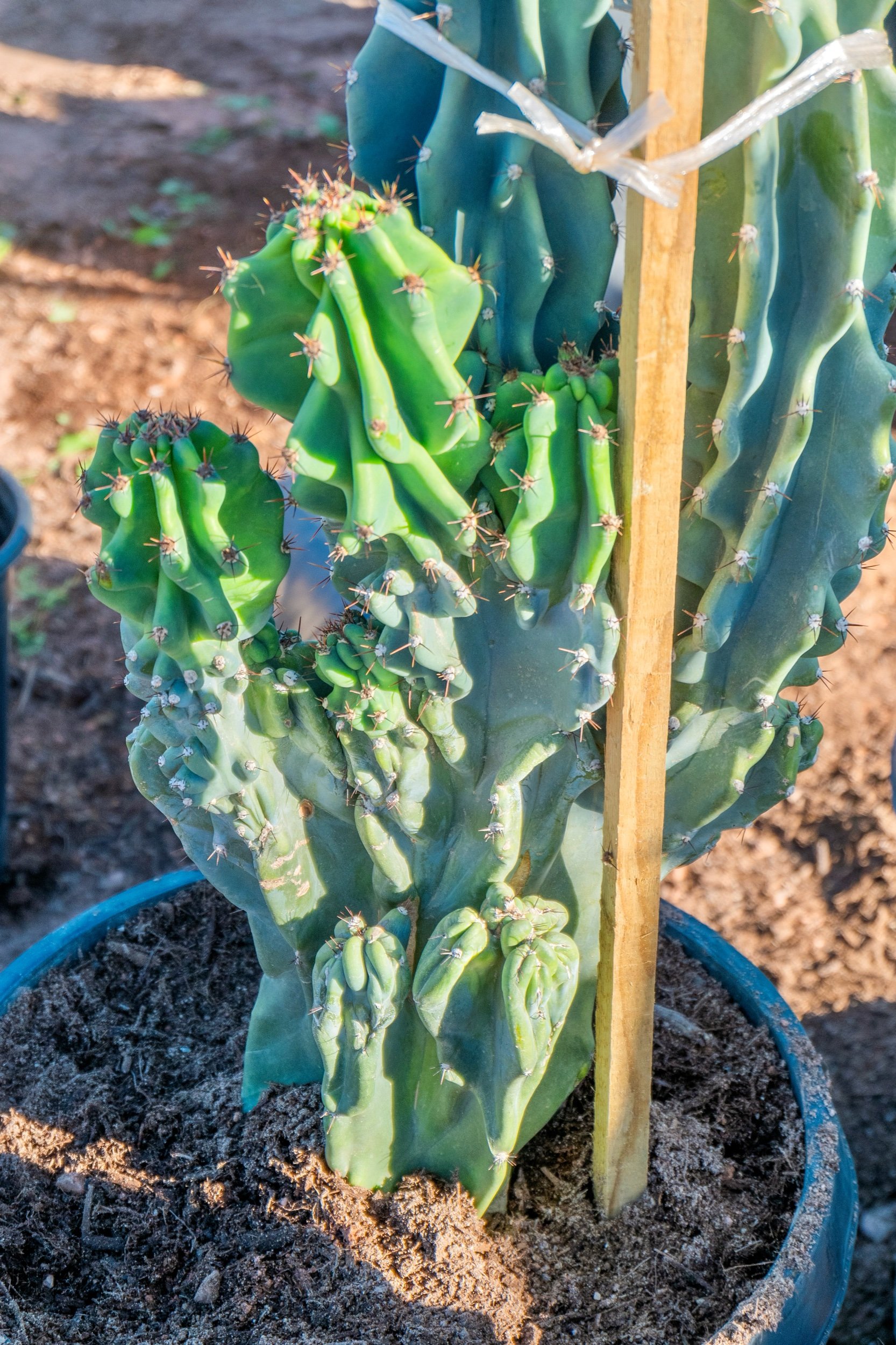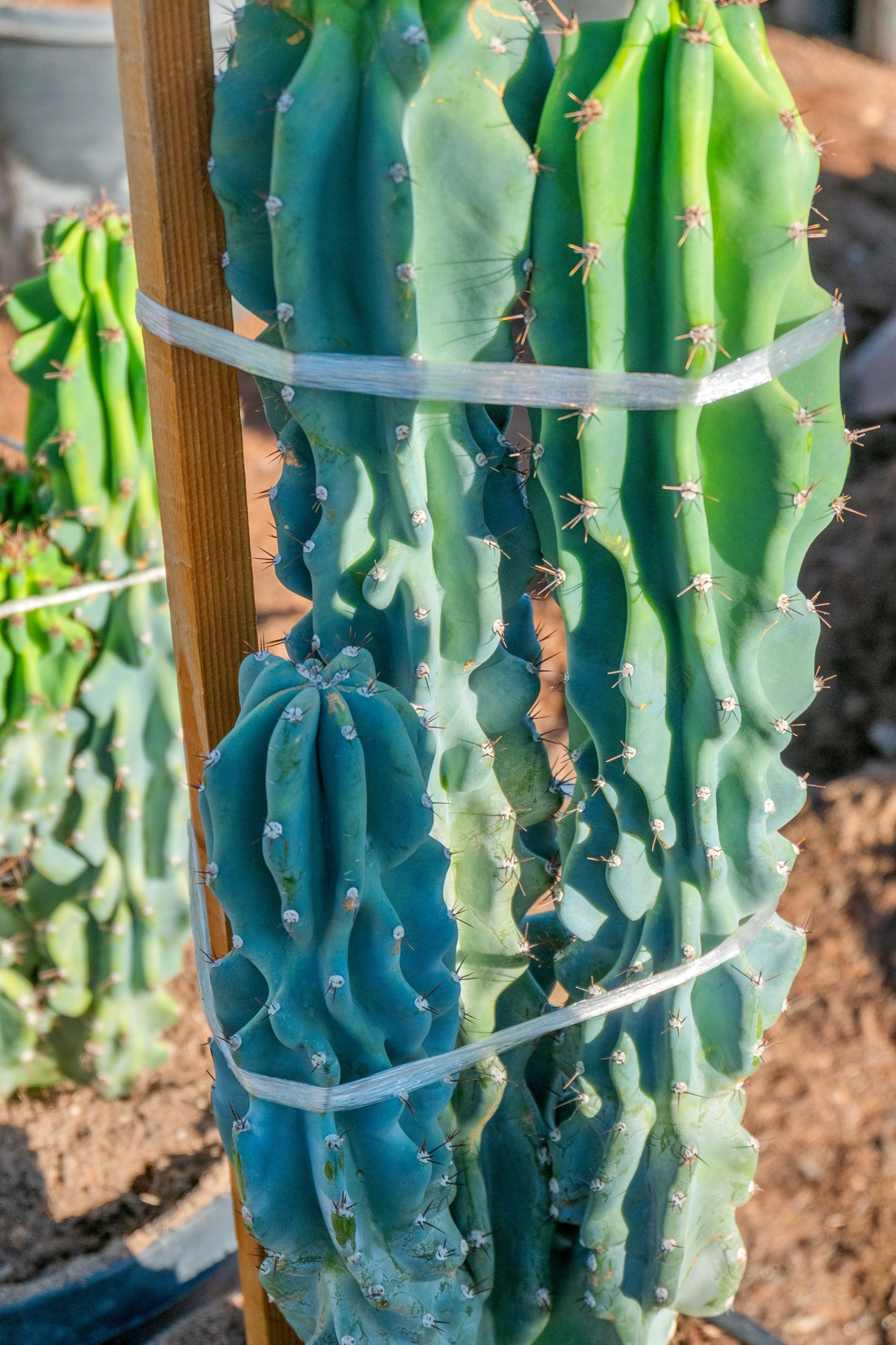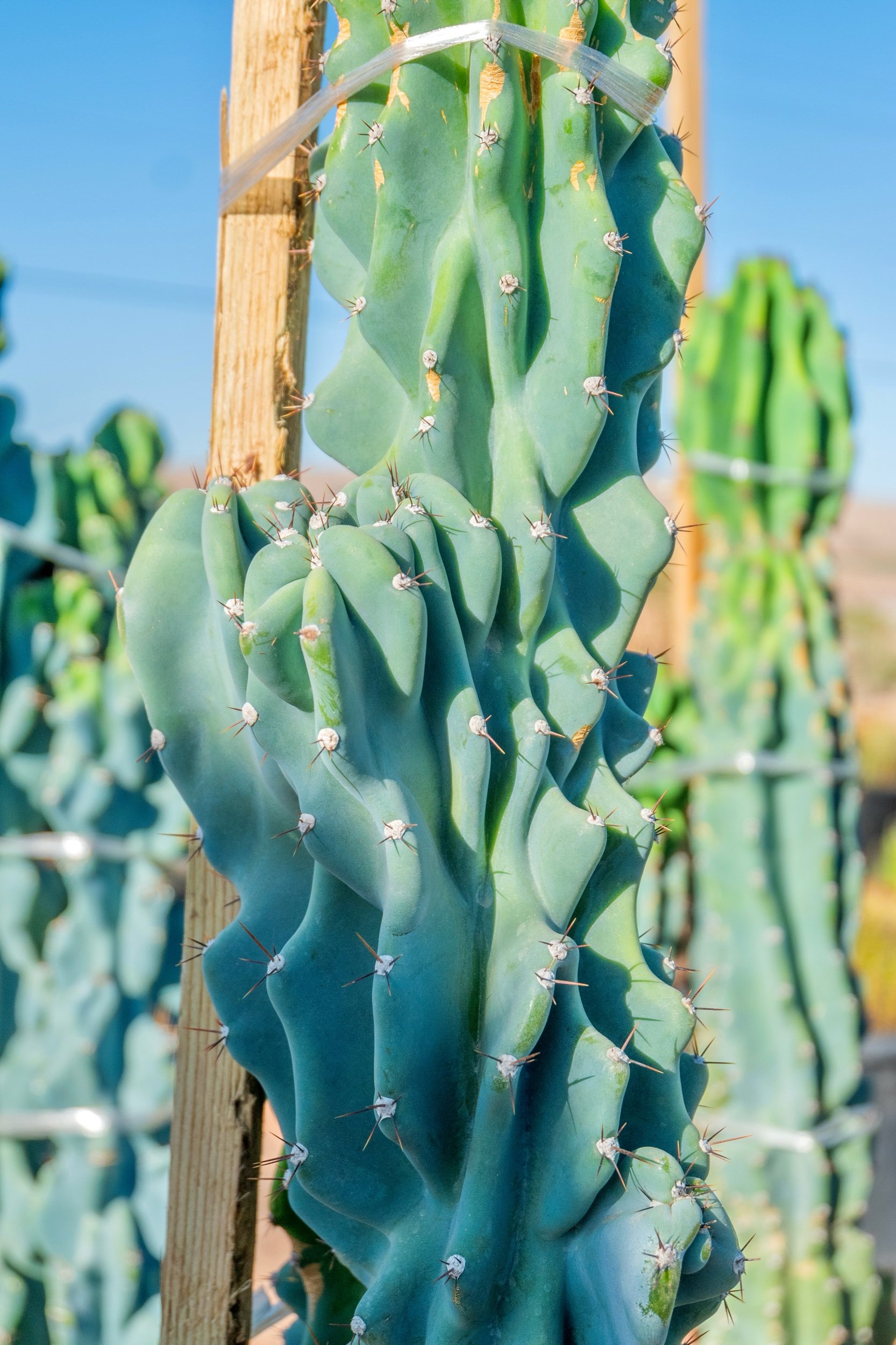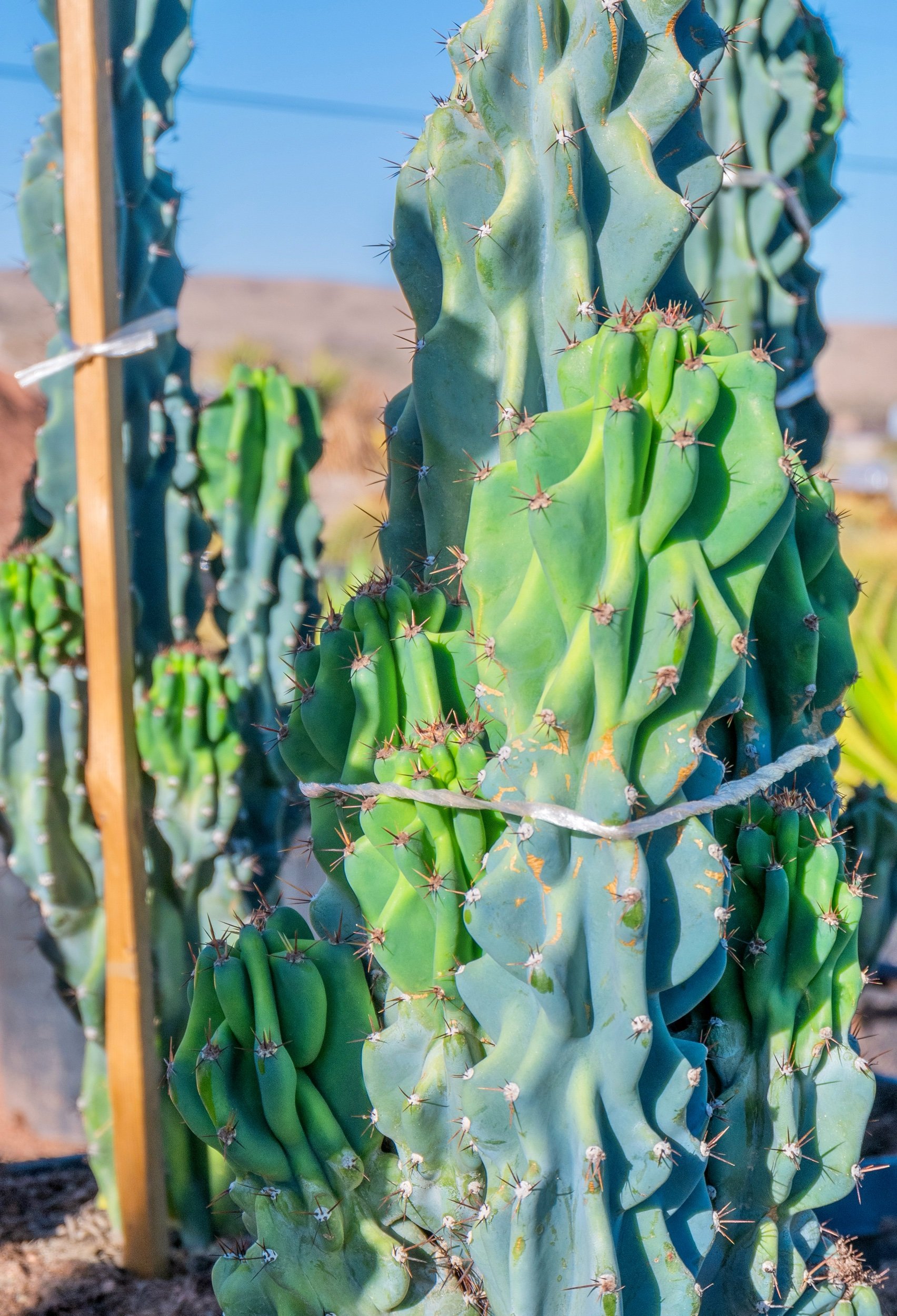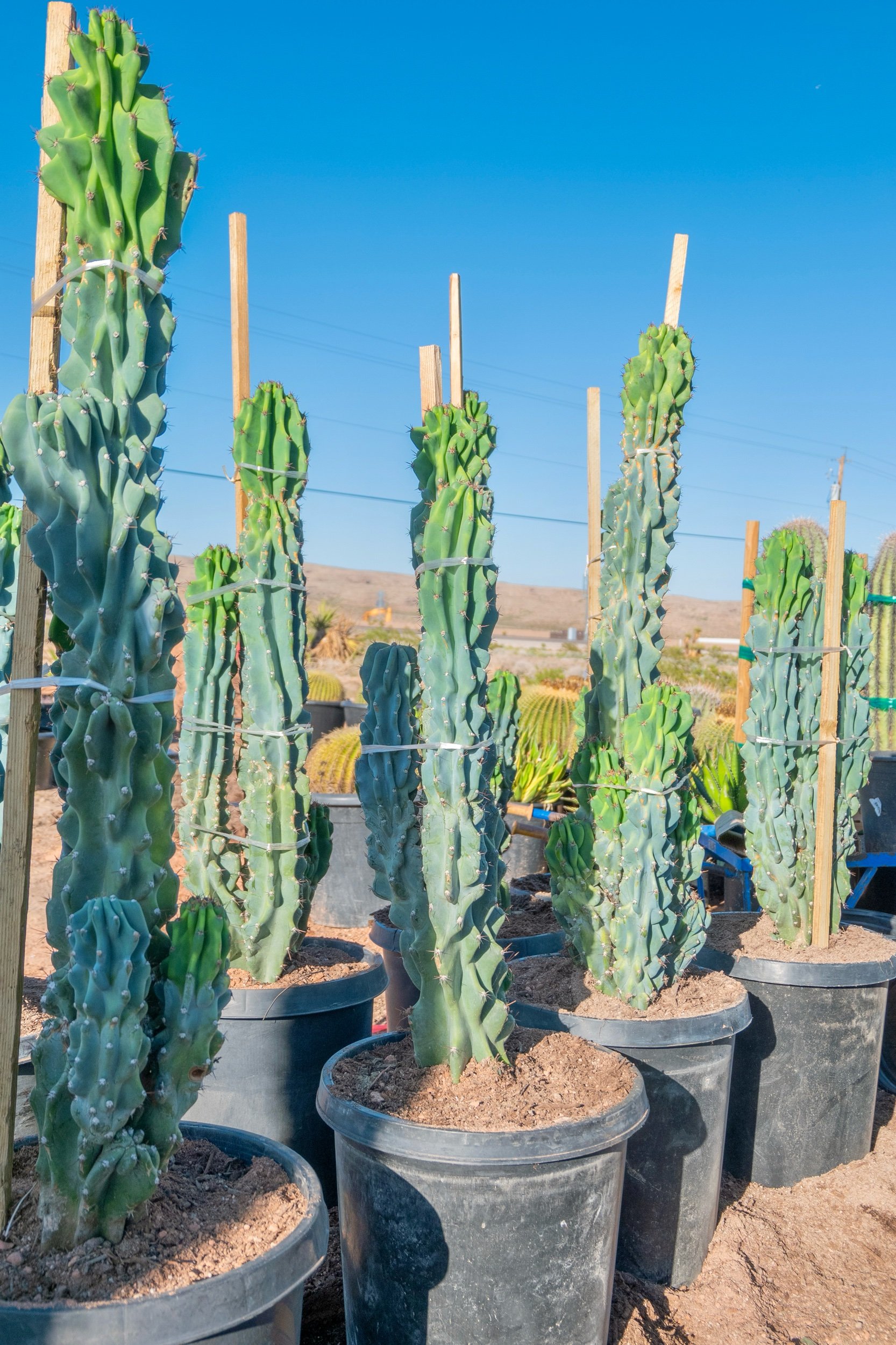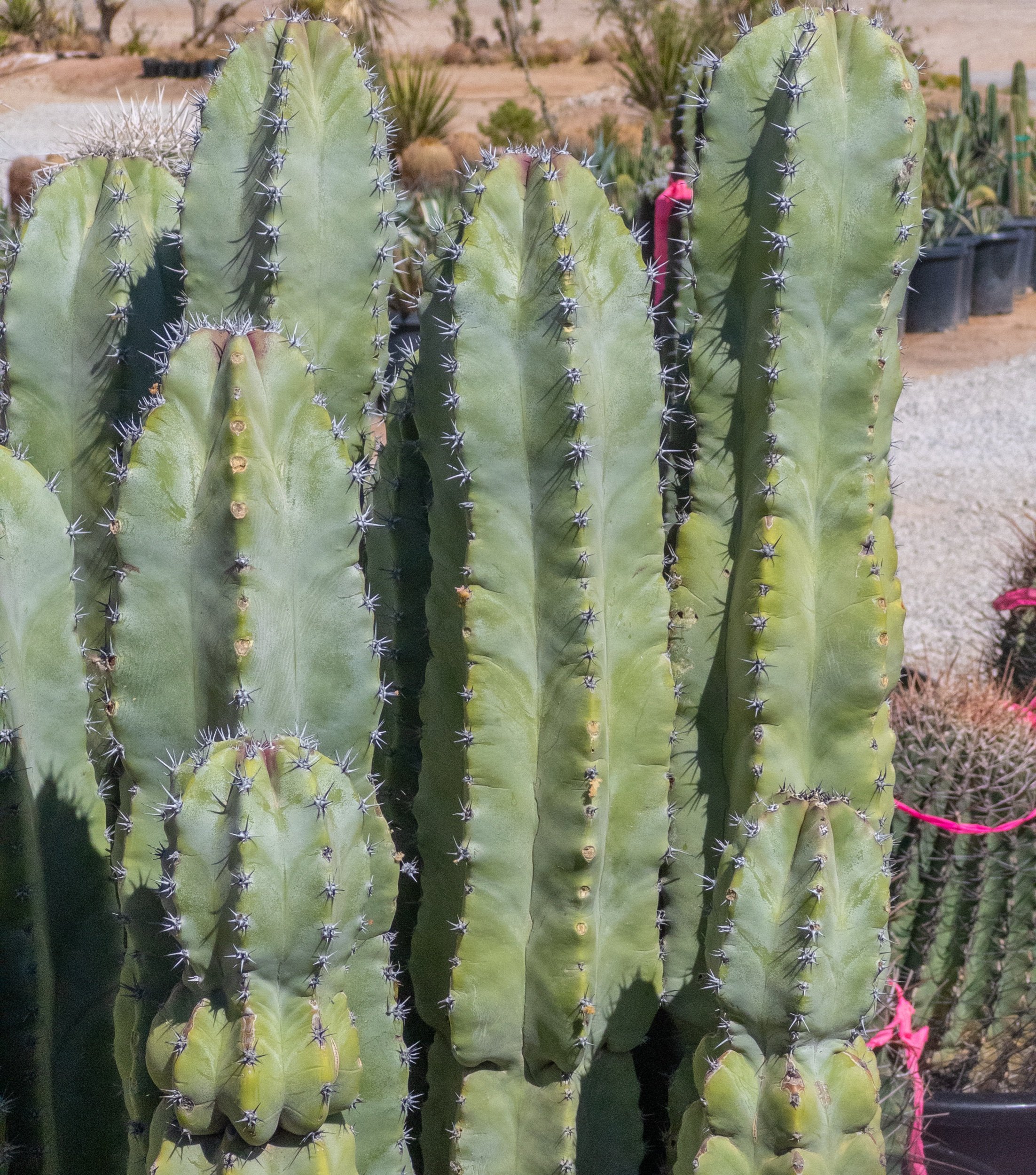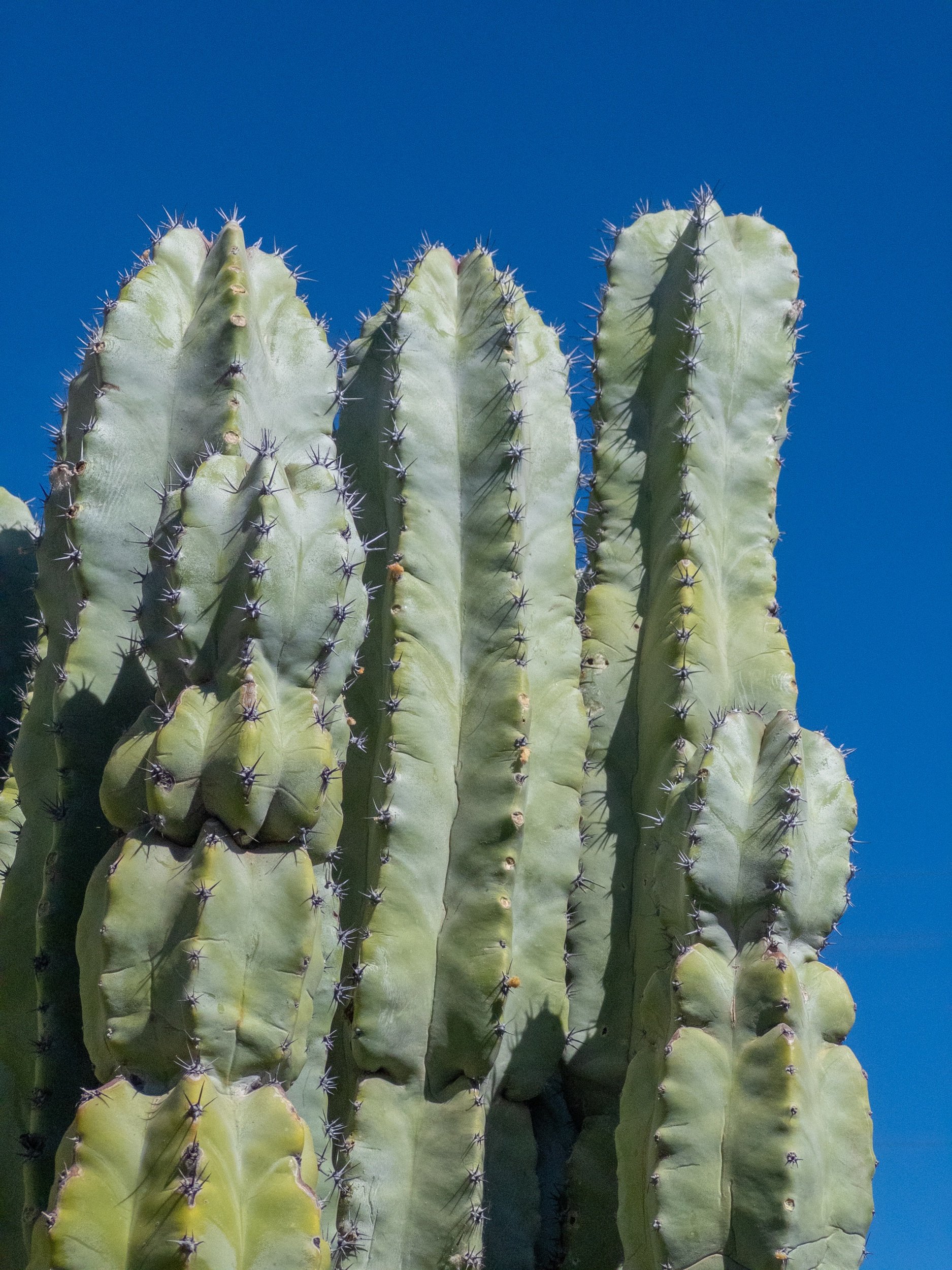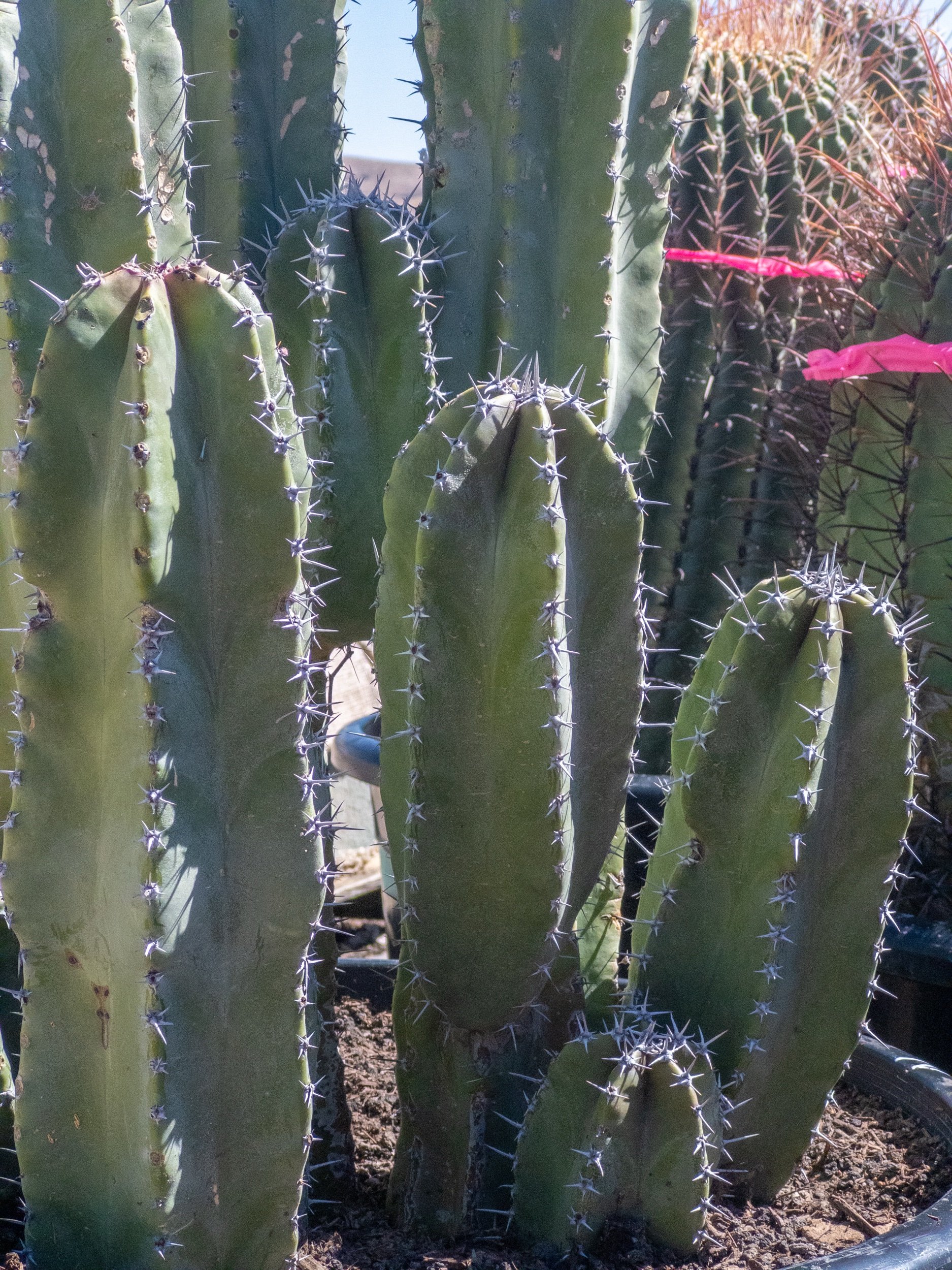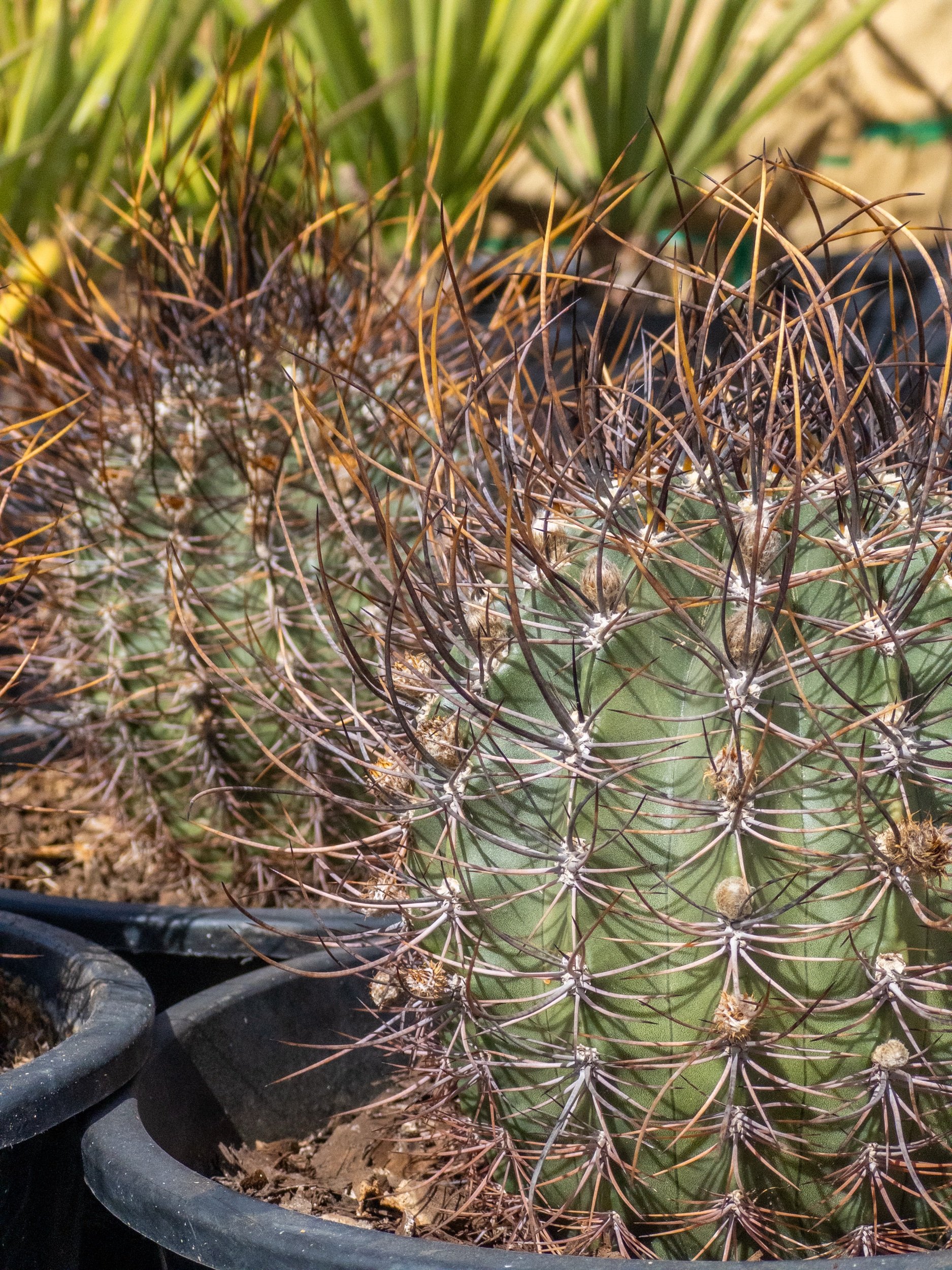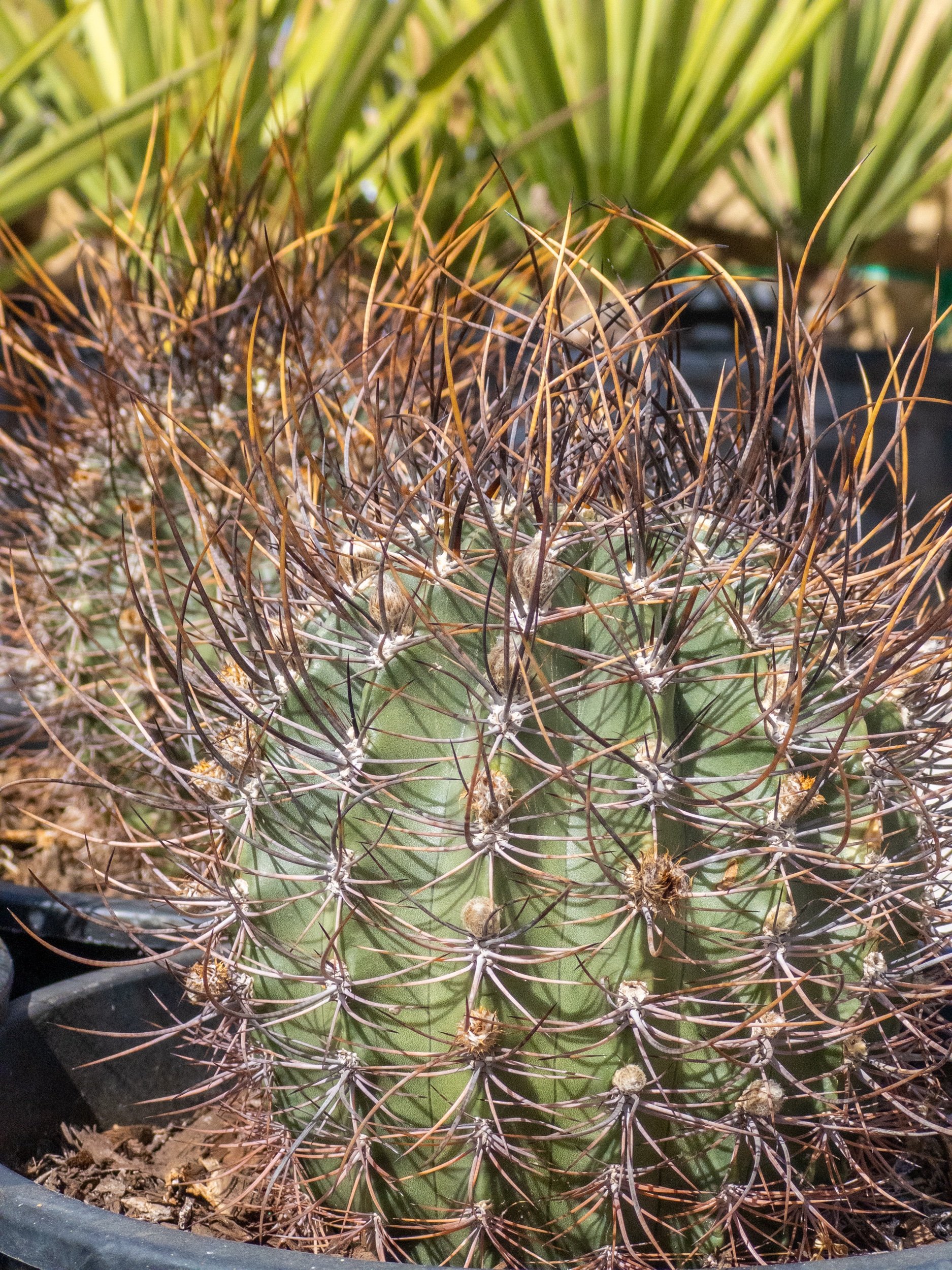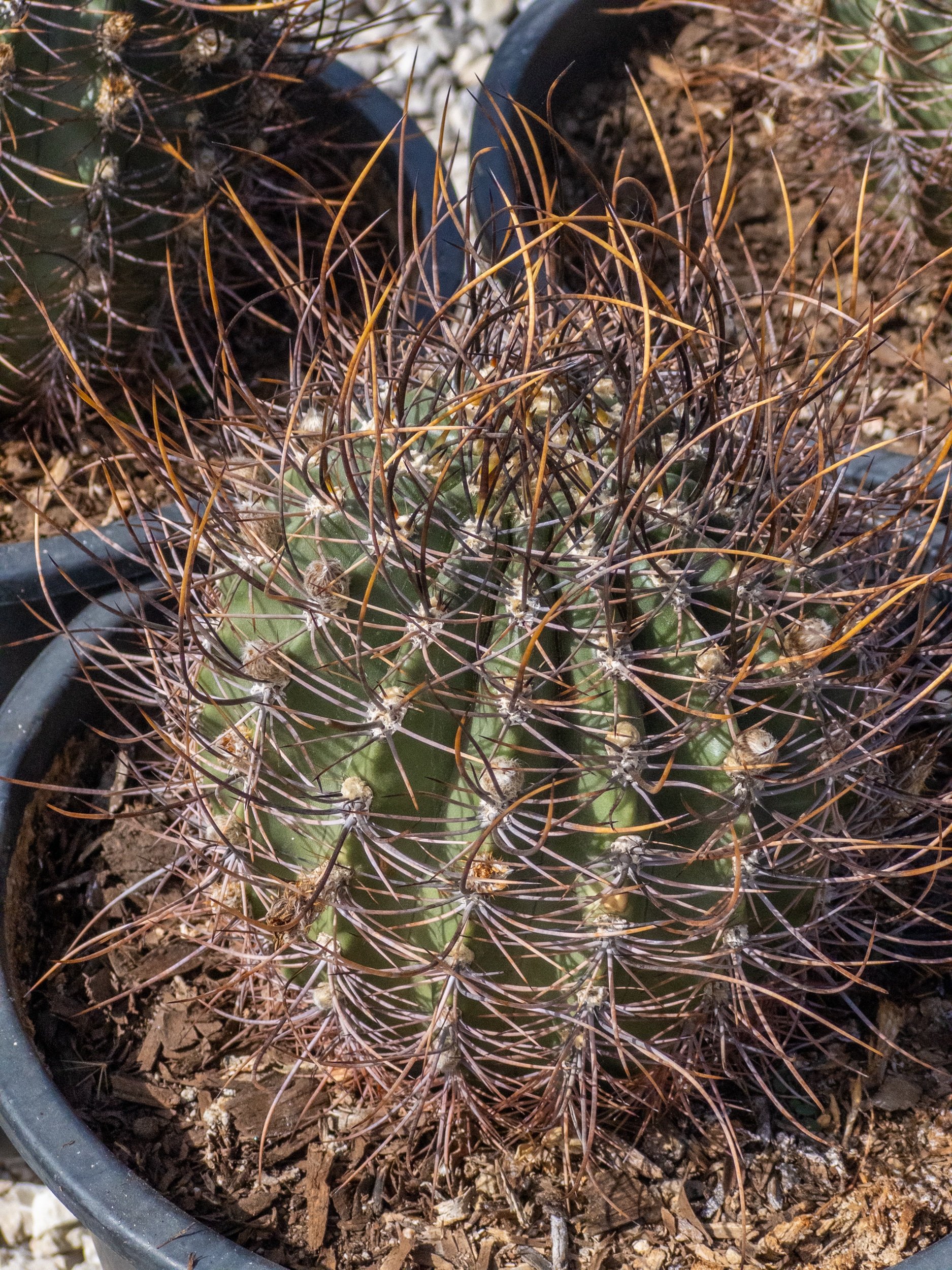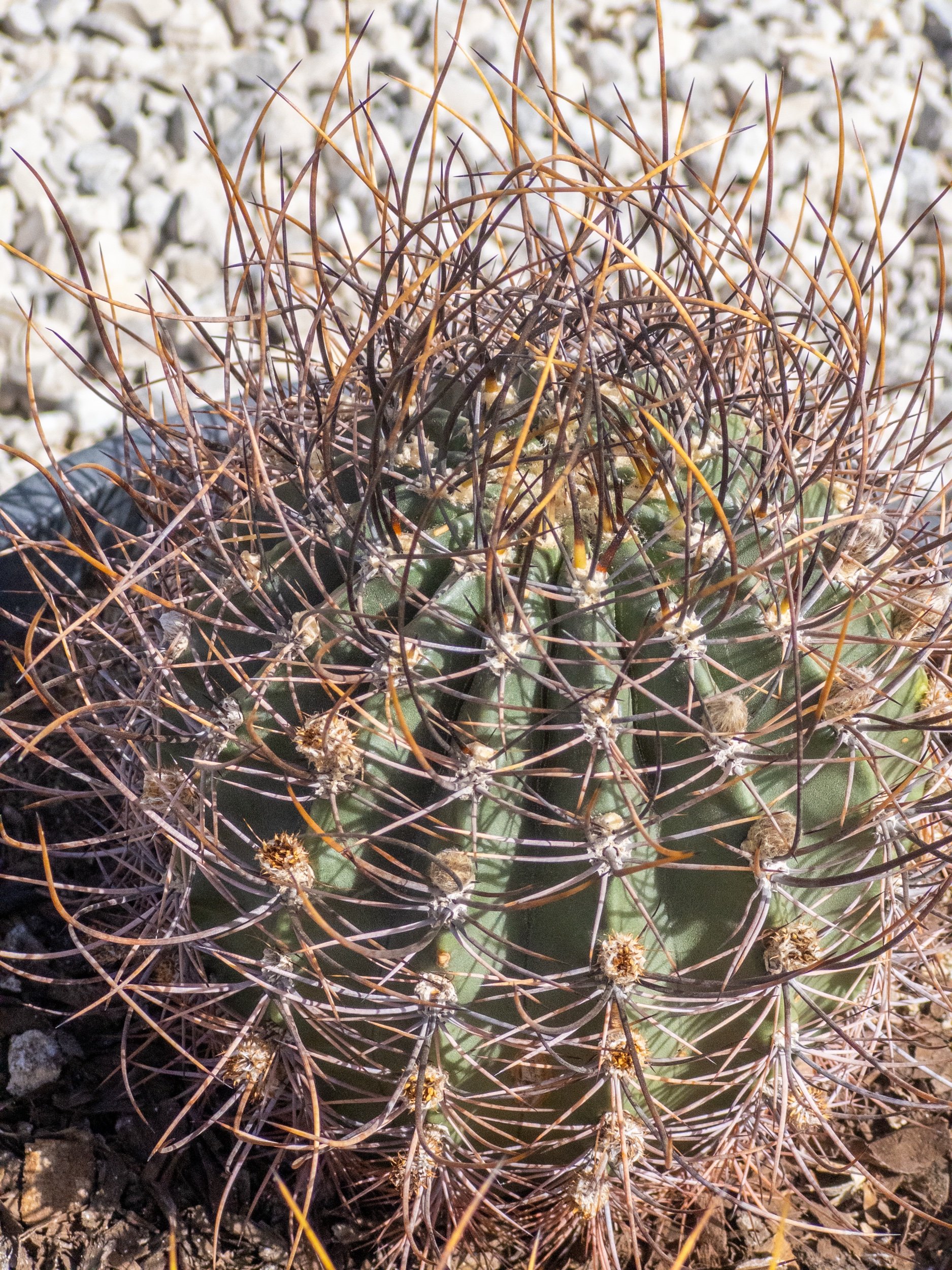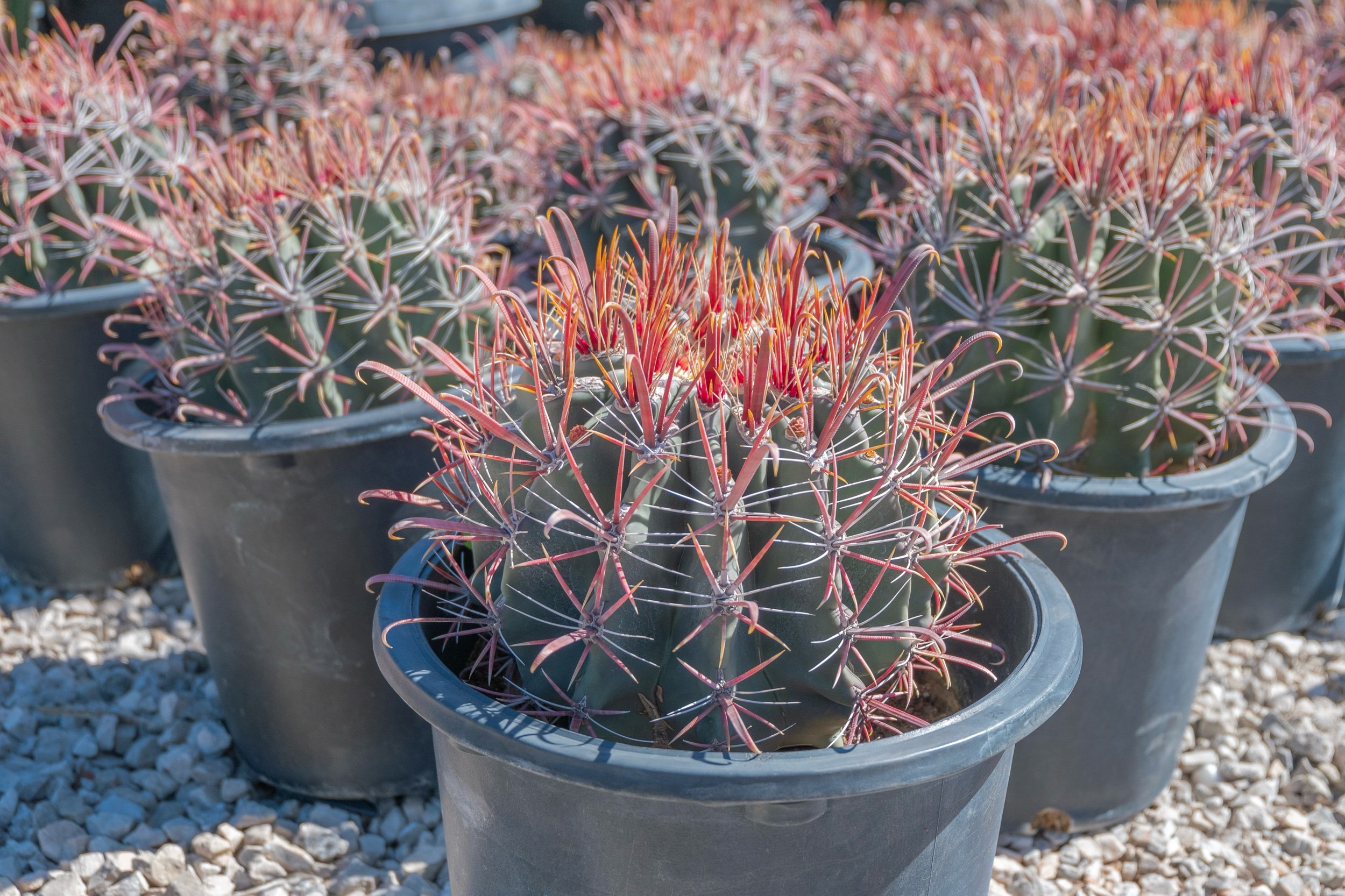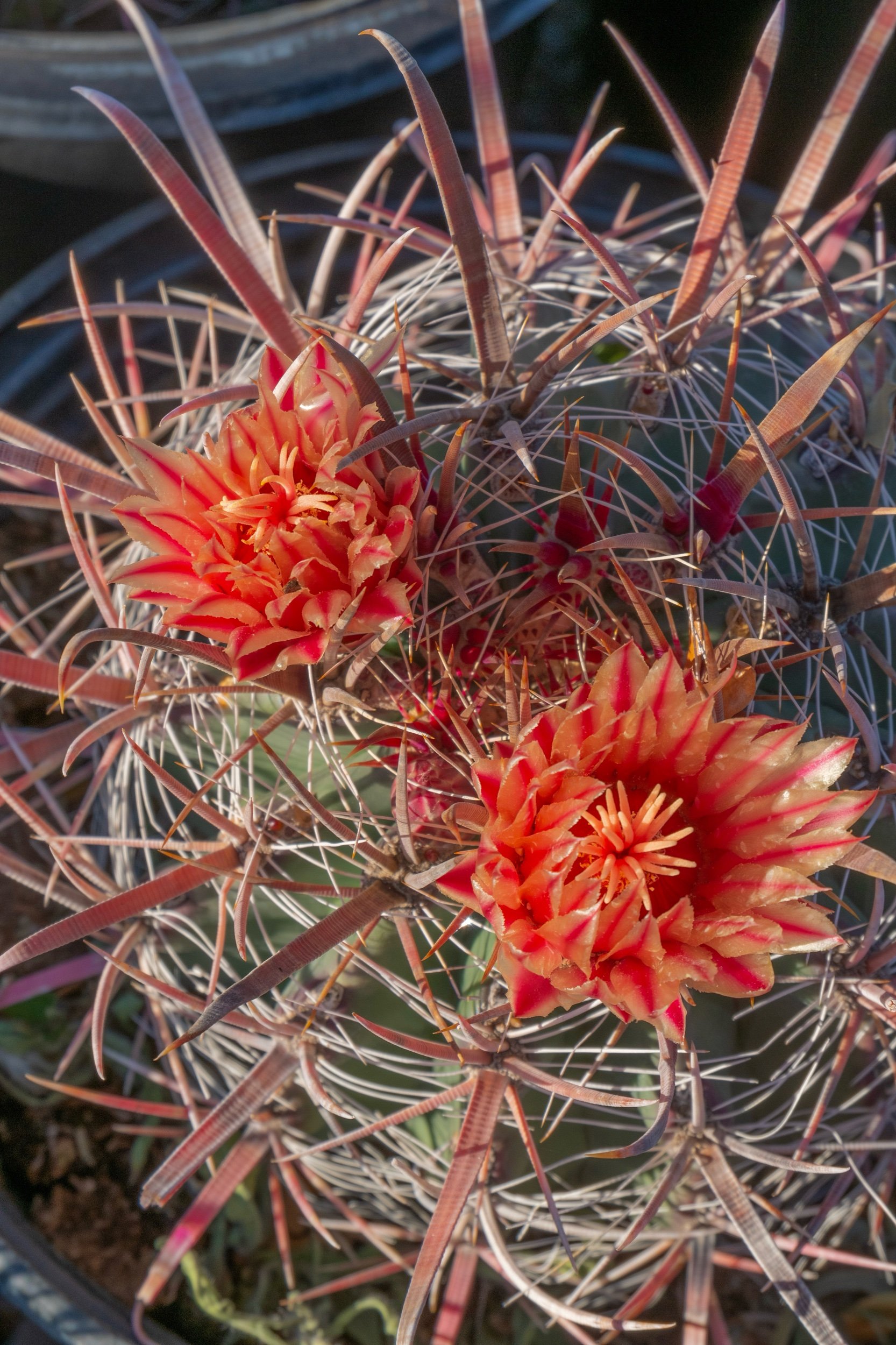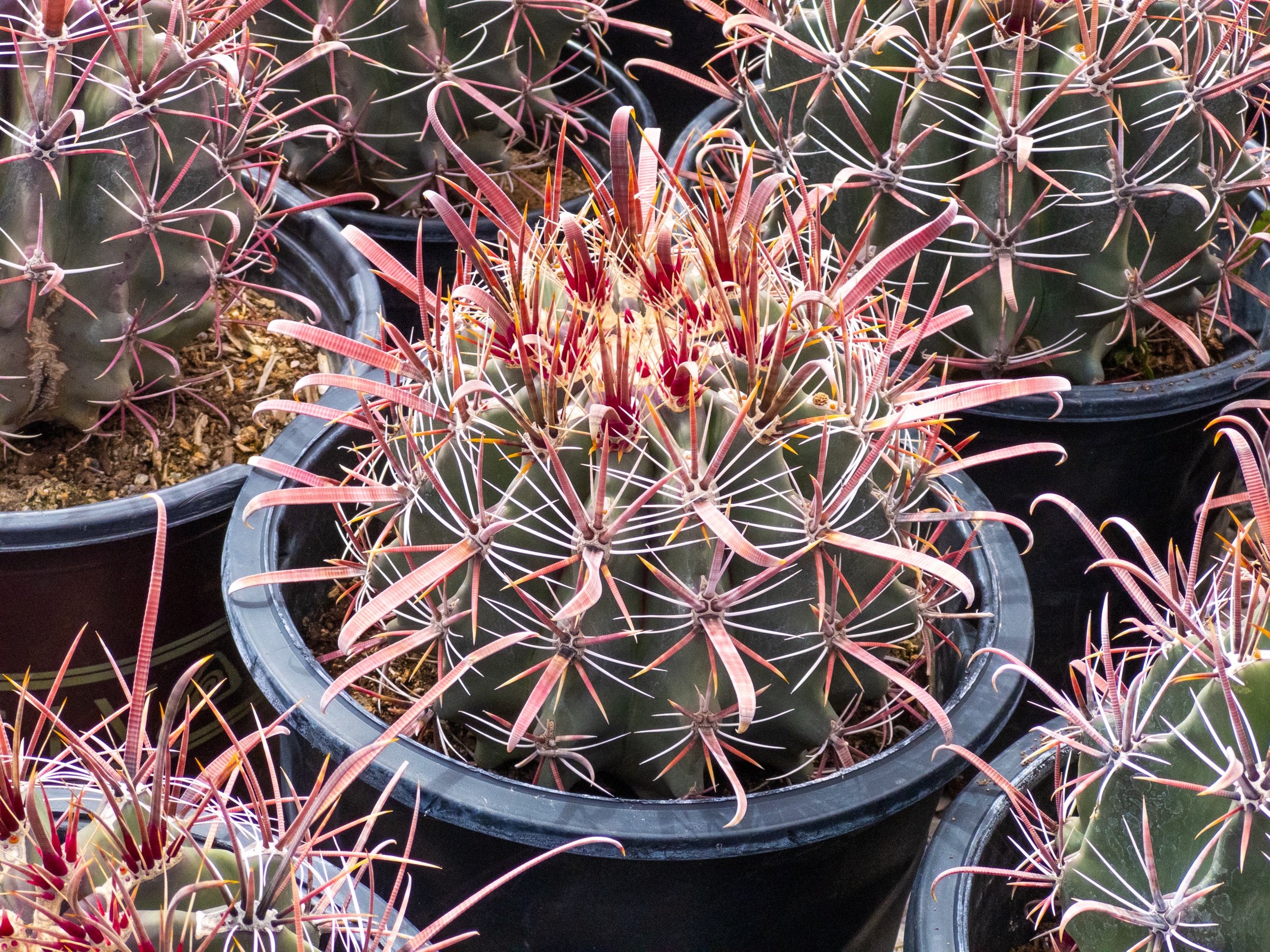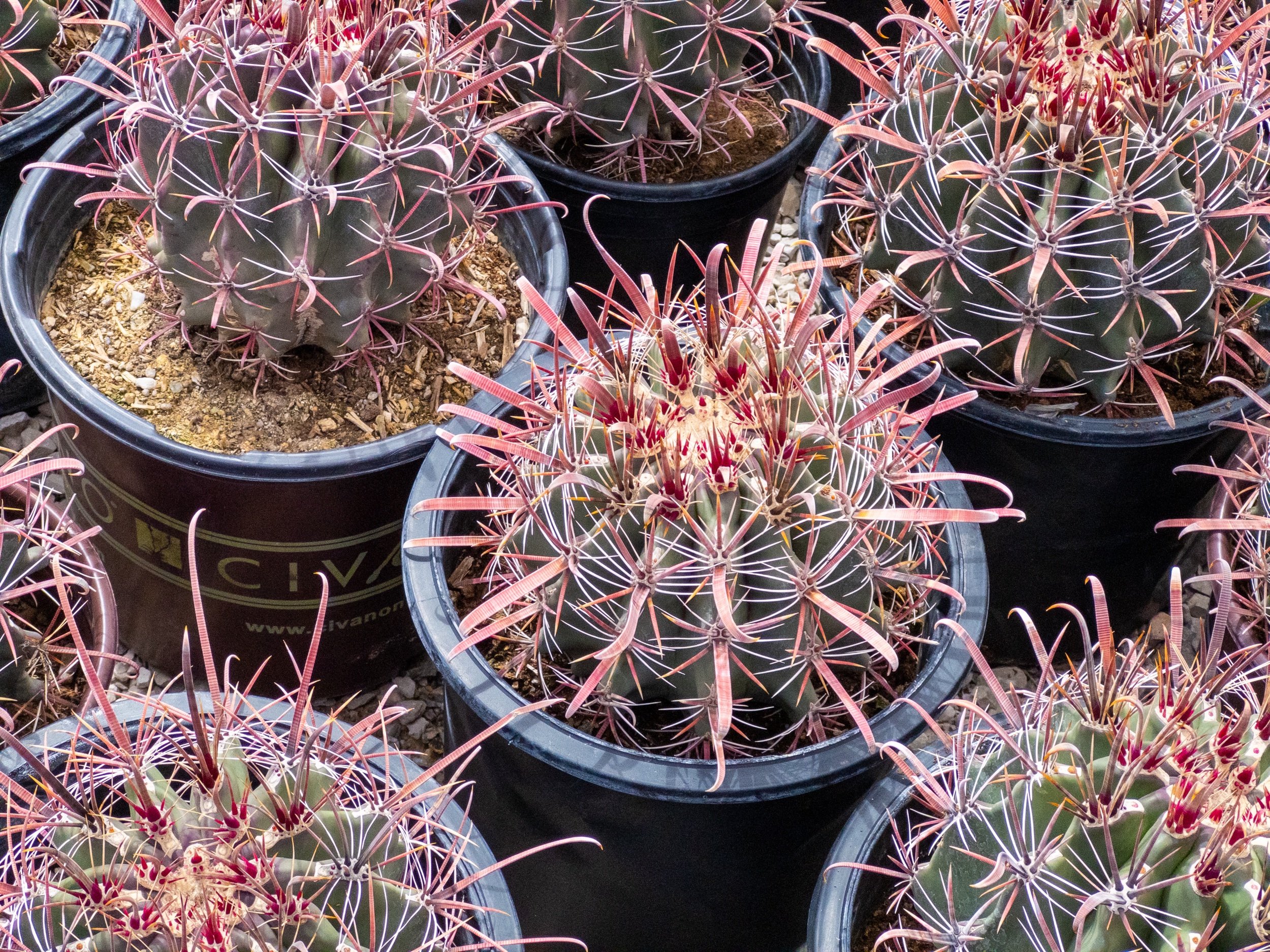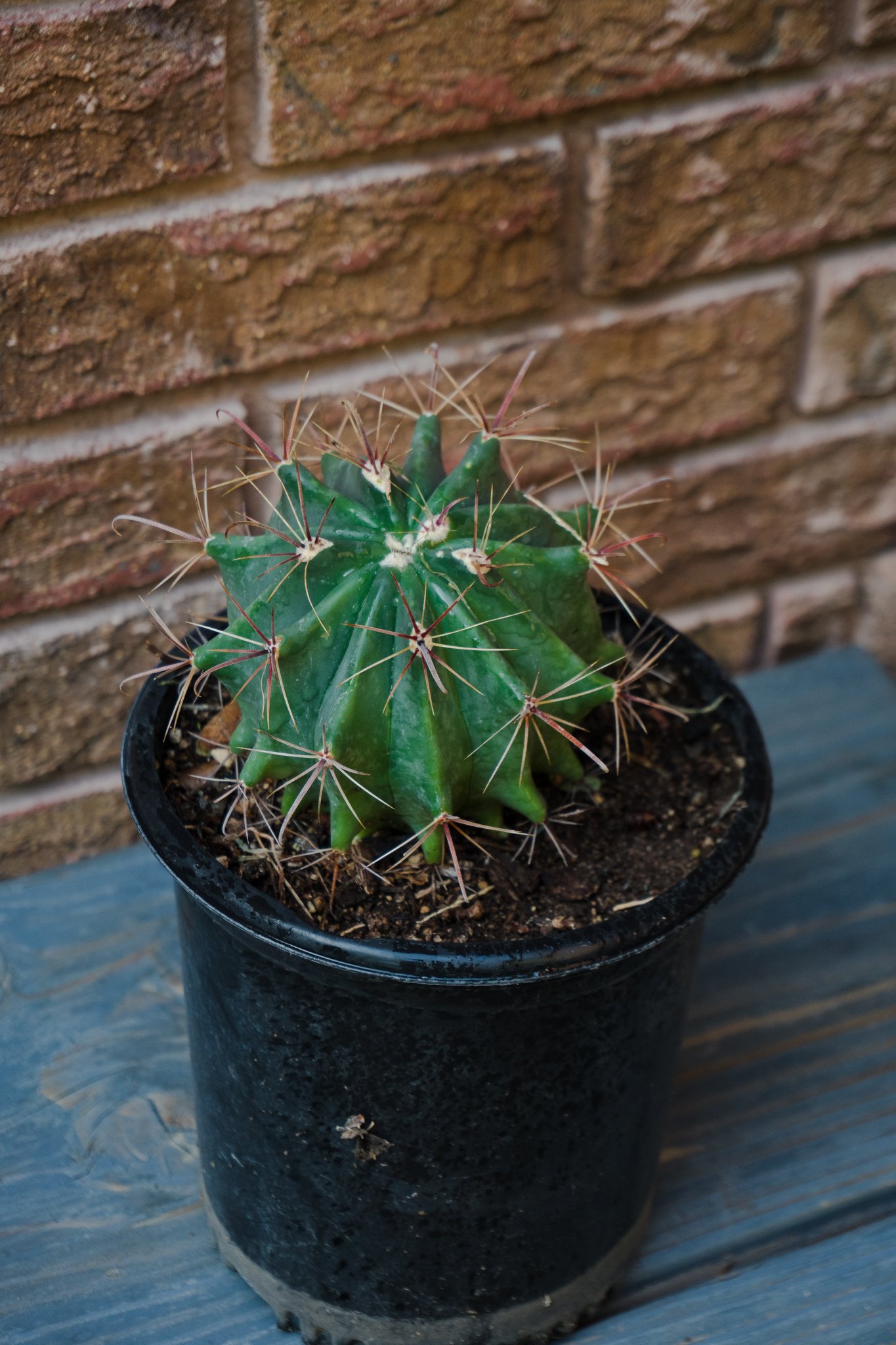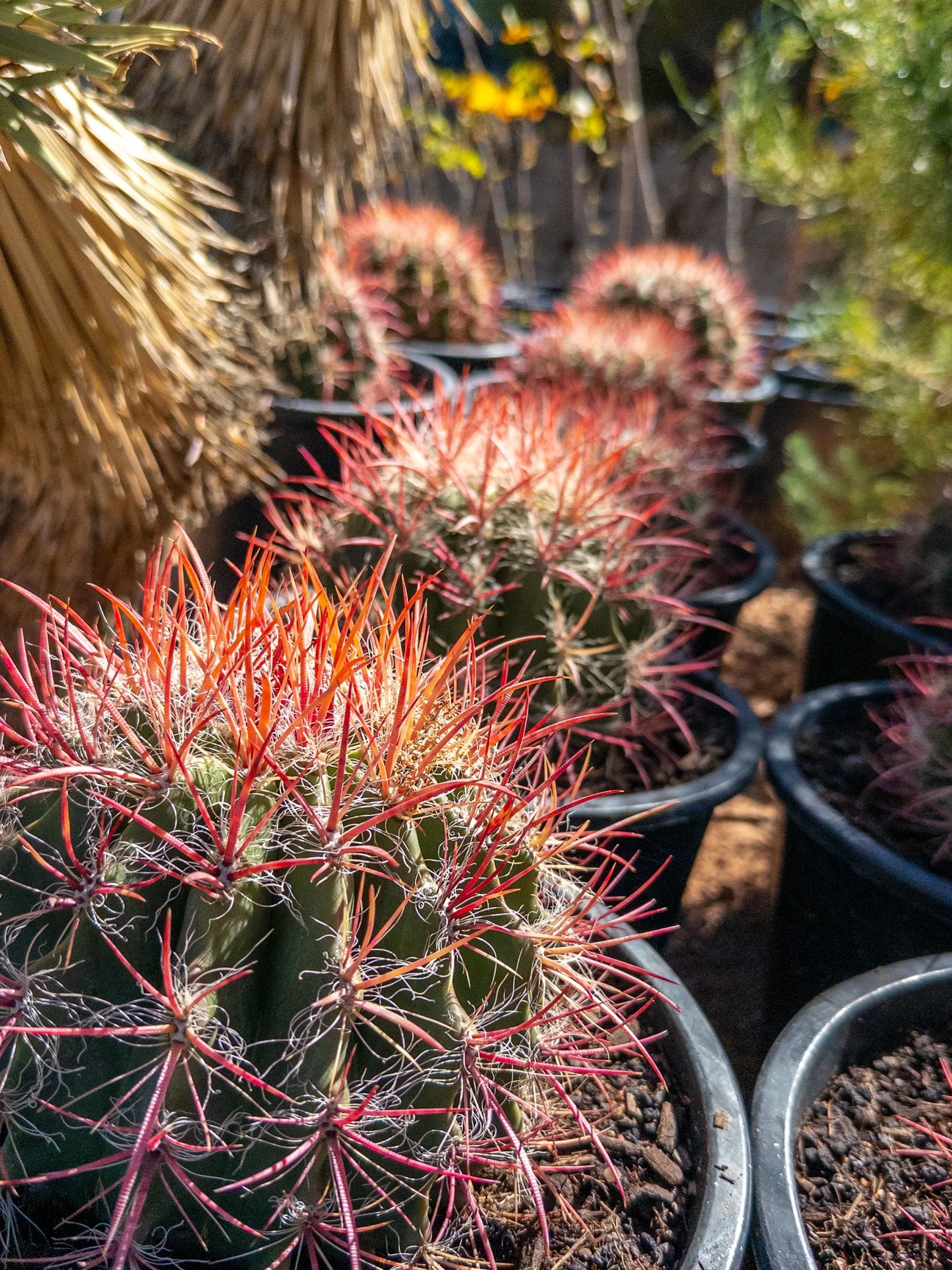 Image 1 of 4
Image 1 of 4

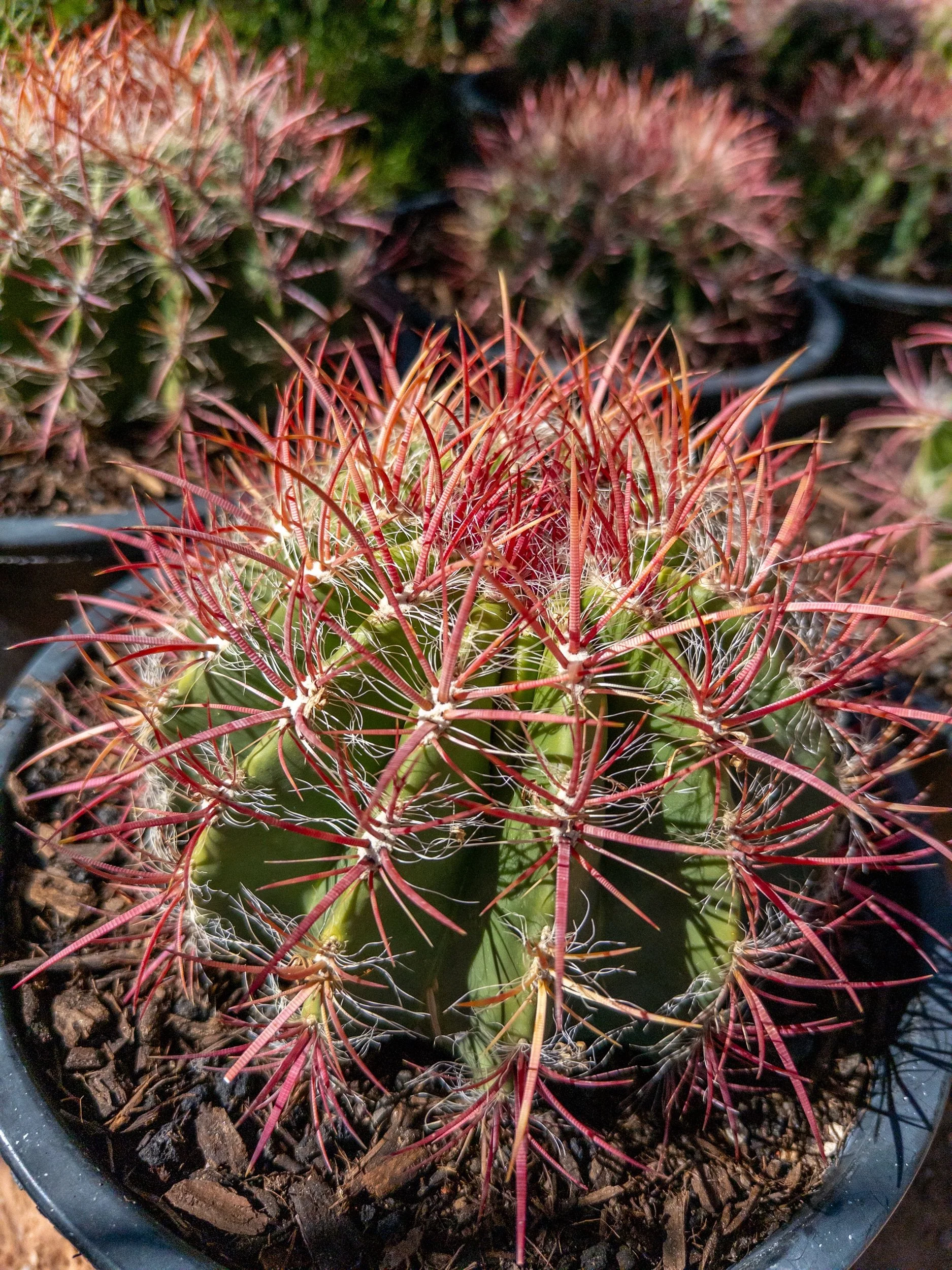 Image 2 of 4
Image 2 of 4

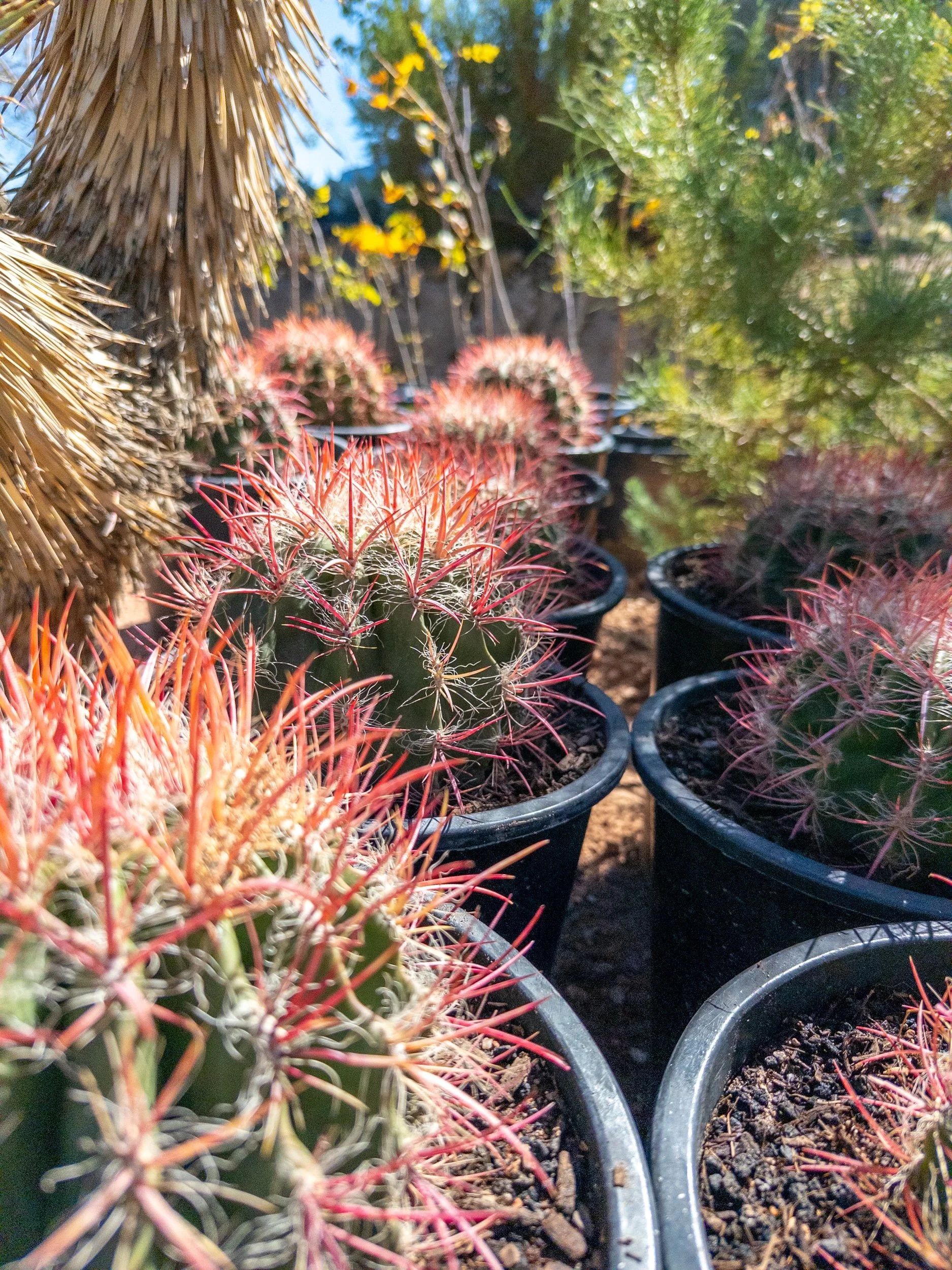 Image 3 of 4
Image 3 of 4

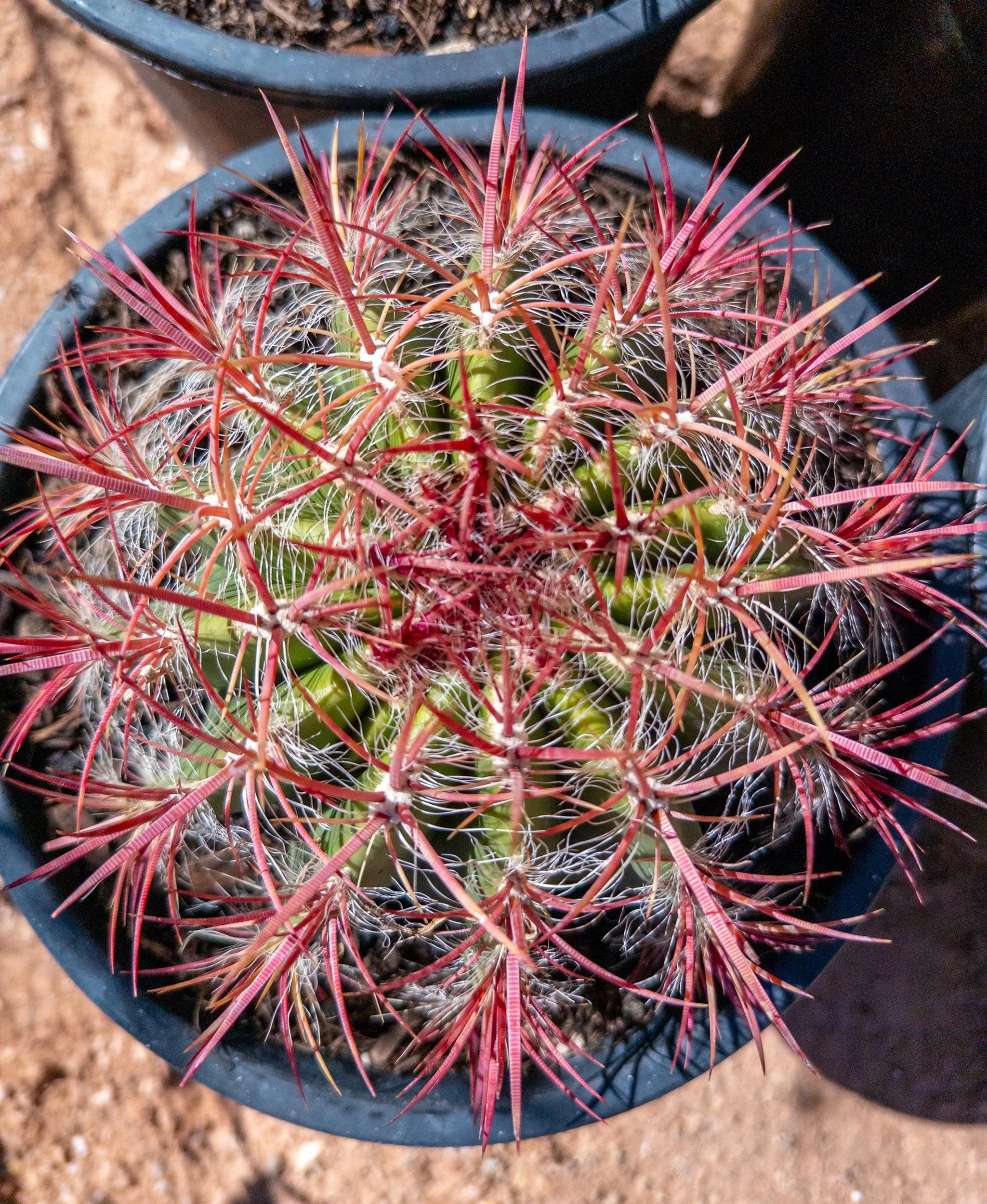 Image 4 of 4
Image 4 of 4





Baja Barrel Cactus (Ferocactus palosii)
This is a striking, solitary barrel cactus endemic to the Baja California Peninsula in Mexico, particularly in the central and southern regions. It’s part of the diverse Ferocactus genus, which thrives in arid, rocky habitats. Named after its discovery near Palos Verdes in Baja California Sur, it’s prized by collectors for its robust form and vibrant spines. Note: If you meant a different spelling (e.g., “palmeri” or another variant), or perhaps Ferocactus viridescens var. littoralis (Santo Tomás coast barrel from northern Baja), let me know for clarification!
Key Characteristics
• Appearance: Solitary and globular to cylindrical, it grows up to 3–5 feet (1–1.5 m) tall and 2–3 feet (60–90 cm) in diameter at maturity. The blue-green to gray-green epidermis is ribbed (21–30 ribs), with dense clusters of straight to slightly curved spines. Central spines are prominent, up to 2–3 inches (5–7 cm) long, often reddish-brown or yellowish, while radials are shorter and whitish. Young plants have a more rounded shape, elongating with age.
• Flowers and Fruit: In late spring to summer (April–July), it produces large, funnel-shaped flowers (2–3 inches/5–7 cm across) in shades of yellow, orange, or red, emerging from the apex. These are followed by fleshy, yellowish fruits that split open to reveal black seeds. Pollination is primarily by native bees.
• Growth Habit: Slow-growing and non-offsetting, it forms a single, majestic column. Its spines provide protection from herbivores and shade the body to reduce water loss.
Growing Tips
• Hardiness: USDA zones 9–11; tolerates down to about 20°F (-7°C) briefly but prefers frost-free conditions. Native to elevations of 1,000–3,000 feet (300–900 m) in rocky, limestone soils.
• Light and Soil: Full sun is essential for compact growth and spine color; use well-draining, gritty cactus mix with added perlite or pumice to mimic Baja’s volcanic/rocky terrain.
• Water and Care: Extremely drought-tolerant; water deeply but infrequently (every 3–4 weeks in summer, none in winter). Fertilize sparingly with a low-nitrogen cactus formula in spring. Prone to rot from overwatering—err on the dry side. Pests like mealybugs or scale can occur; treat with insecticidal soap.
This is a striking, solitary barrel cactus endemic to the Baja California Peninsula in Mexico, particularly in the central and southern regions. It’s part of the diverse Ferocactus genus, which thrives in arid, rocky habitats. Named after its discovery near Palos Verdes in Baja California Sur, it’s prized by collectors for its robust form and vibrant spines. Note: If you meant a different spelling (e.g., “palmeri” or another variant), or perhaps Ferocactus viridescens var. littoralis (Santo Tomás coast barrel from northern Baja), let me know for clarification!
Key Characteristics
• Appearance: Solitary and globular to cylindrical, it grows up to 3–5 feet (1–1.5 m) tall and 2–3 feet (60–90 cm) in diameter at maturity. The blue-green to gray-green epidermis is ribbed (21–30 ribs), with dense clusters of straight to slightly curved spines. Central spines are prominent, up to 2–3 inches (5–7 cm) long, often reddish-brown or yellowish, while radials are shorter and whitish. Young plants have a more rounded shape, elongating with age.
• Flowers and Fruit: In late spring to summer (April–July), it produces large, funnel-shaped flowers (2–3 inches/5–7 cm across) in shades of yellow, orange, or red, emerging from the apex. These are followed by fleshy, yellowish fruits that split open to reveal black seeds. Pollination is primarily by native bees.
• Growth Habit: Slow-growing and non-offsetting, it forms a single, majestic column. Its spines provide protection from herbivores and shade the body to reduce water loss.
Growing Tips
• Hardiness: USDA zones 9–11; tolerates down to about 20°F (-7°C) briefly but prefers frost-free conditions. Native to elevations of 1,000–3,000 feet (300–900 m) in rocky, limestone soils.
• Light and Soil: Full sun is essential for compact growth and spine color; use well-draining, gritty cactus mix with added perlite or pumice to mimic Baja’s volcanic/rocky terrain.
• Water and Care: Extremely drought-tolerant; water deeply but infrequently (every 3–4 weeks in summer, none in winter). Fertilize sparingly with a low-nitrogen cactus formula in spring. Prone to rot from overwatering—err on the dry side. Pests like mealybugs or scale can occur; treat with insecticidal soap.
